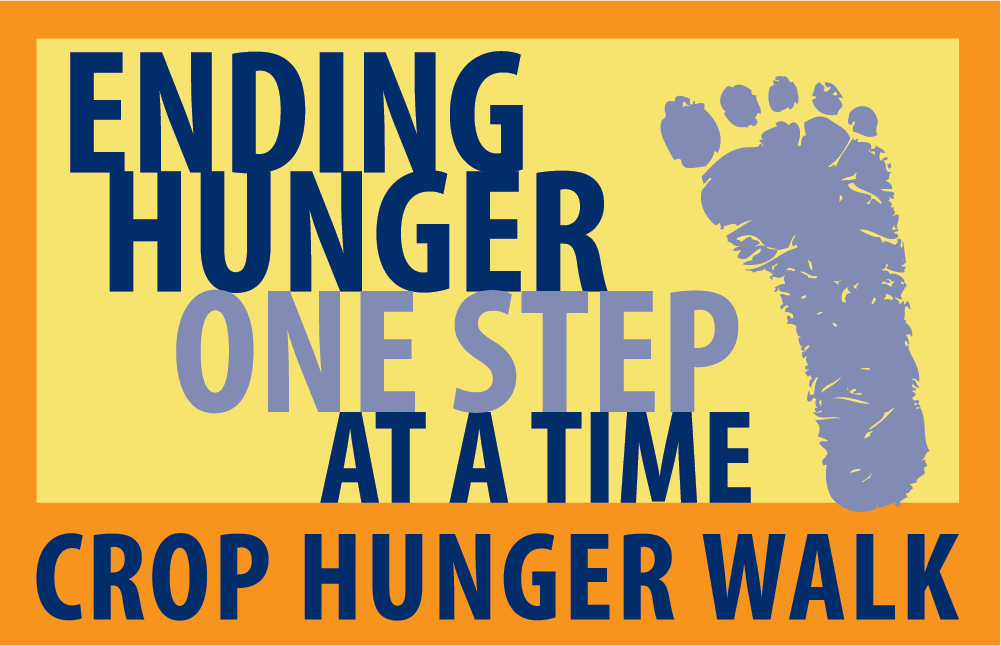Month: October 2022
Cynthia Pearl • Derry Member
October 27, 2022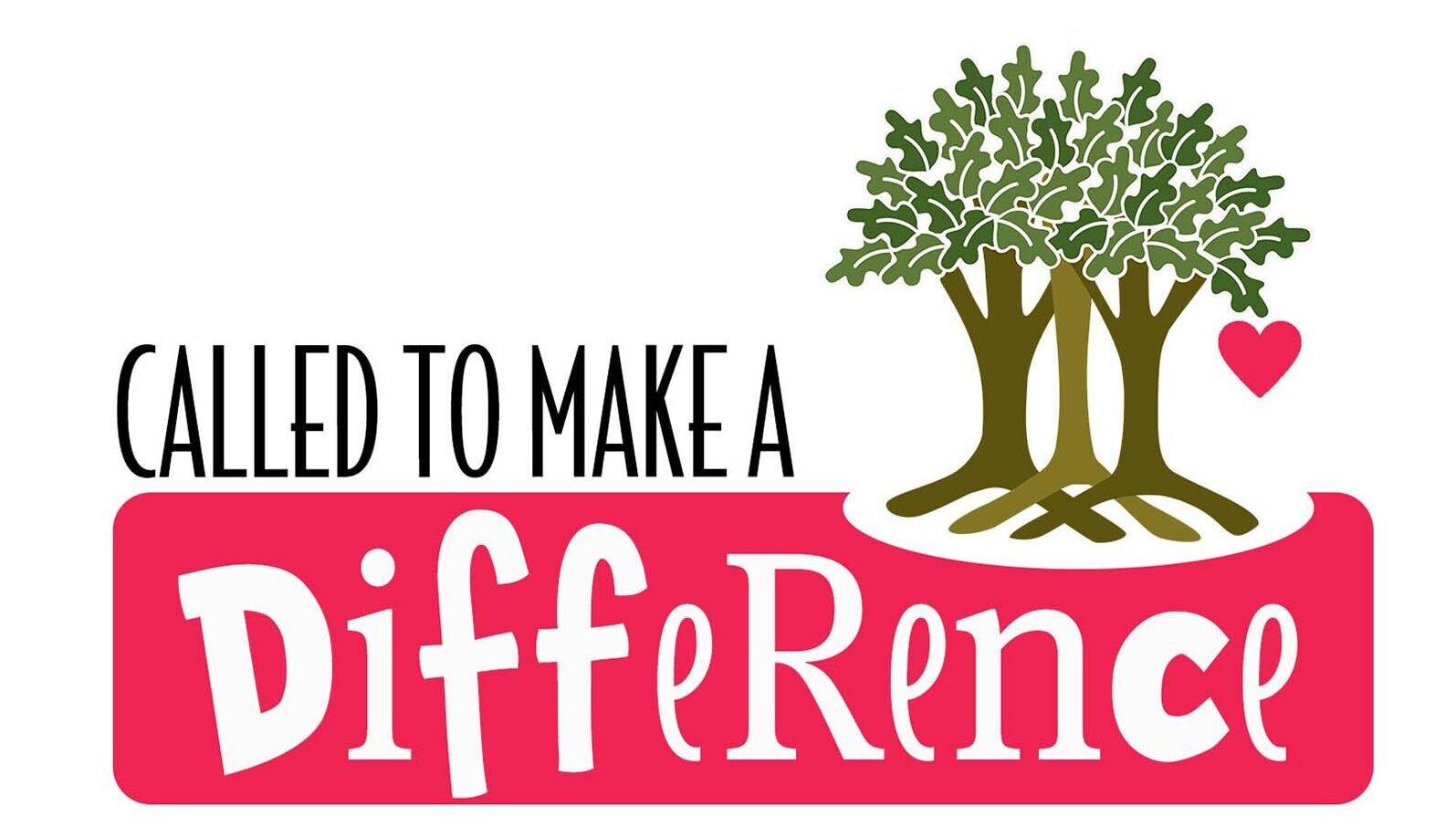
One of the duties of the Deacons is caring for members in need. As a Deacon at Derry, I was offered the opportunity to accompany Pastor Stephen on his monthly visits to homebound members to serve them communion. I was grateful for the opportunity since COVID had impacted our in-person contact with many Derry members.
We set out on the Tuesday morning after Labor Day. We were warmly welcomed into the members’ homes and, for those I knew, it was a chance to renew friendships or to make new acquaintances. Each visit was filled with easy conversation, listening to their news about family or hearing about any concerns they had. At one home we even sang a favorite hymn together. It was a joy to see their smiles as we chatted at leisure. Then Pastor Stephen opened his traveling communion kit and we shared the “bread of Heaven” and the “cup of salvation.”.
Many of our homebound members live stream the Sunday service but cannot share in taking the sacrament of communion in person with others. It was clearly a joy to take the bread and cup with them and see how delighted they were to receive us in their homes.
It was a fulfilling experience for me, and I hope other Derry Deacons will choose to accompany Pastor Stephen on these monthly visits. If you’ve ever served as a Deacon (or an Elder), you can participate: just contact Pastor Stephen and let him know you’re available.
2022 Derry Church Keepsake Ornament
October 26, 2022Presenting Derry’s 2022 keepsake ornament handcrafted by blacksmith Mark Smith!
Starting Nov 1, you can purchase ornaments in the church office (ask for Sue George). On Sunday mornings in November, you can buy them in the Narthex. These charming metal tree ornaments are 3″ wide by 4″ high and cost $15 each.
Proceeds fund scholarships for students who attend Presbyterian Education Board schools in Pakistan. Only 150 ornaments have been made, so don’t wait to get yours.

Check Out These Adult Classes
October 26, 20229-10 SUNDAY, OCT 30
Issues Class
Room 7 and streaming on derrypres.org, YouTube and Facebook
Do you have what it takes to build and fly your own airplane? Join Howard Whyte on October 30 as he describes researching, building and flying a full scale 1917 Nieuport 28. The Nieuport 28 was a key component to America’s Aerial Defense in WW1. Learn about this aircraft and how one man recreated this legendary flying machine and flew it to glory.
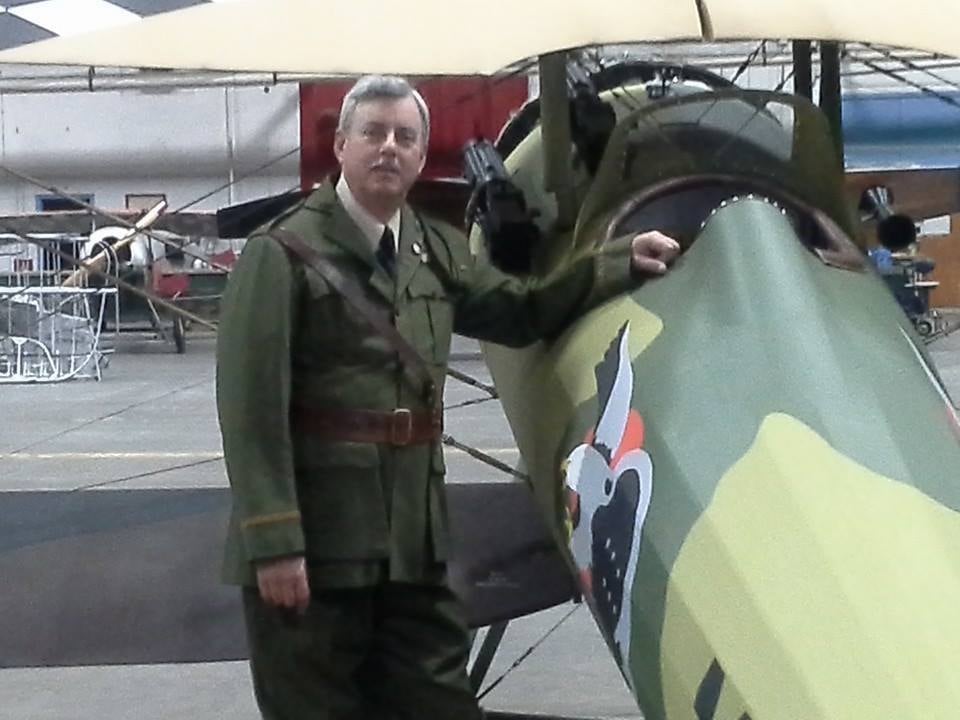
Bible Study: Women in Matthew’s Genealogy/Tamar
Room 2
The book of Matthew begins with a genealogy of Jesus’ male descendants that includes mention of five women: Tamar, Rahab, Ruth (studied previously), Bathsheba and Mary. Who are these women and why are they included in this genealogy? What can these ancestors of Jesus teach us today? Join Tom Folts, Meara Kwee and friends for the next four weeks in a discussion drawn from the Bible study What My Grandmothers Taught Me by Merryl Blair.
A Day to Celebrate Teresa Hutcheson
October 26, 2022SUNDAY, NOV 20 IN 10:30 AM WORSHIP, RECEPTION FOLLOWING
Earlier this year, Derry Church’s long-time secretary Teresa Hutcheson announced her retirement, and we’ve set the date to recognize Teresa in worship and celebrate and give thanks for her 23 years of service and ministry among us.
If you’d like, you may bring a card or mail one to the church (248 E. Derry Road, Hershey PA 17033) and we’ll make sure it’s included in the basket of cards she receives that day. The best gift is your presence in worship that day, when you can tell Teresa how much you’ve appreciated all she’s done to support our congregation.
Update: How You Can Help Our Syrian Refugee Family
October 26, 2022Our Syrian refugee family of six is residing temporarily in one of the Love INC Houses of Hope. You can ease their transition to Pennsylvania by reviewing this list, and if you can help fulfill any of these needs, please contact Pete Feil.
- Permanent, affordable three-bedroom home
- 6-passenger vehicle
- Weather station for indoor/outdoor temperatures and weather forecast
- Two-shelf shoe rack, approximately 12″ wide by 36-48″ long
- Food grinder or food processor
- Hot sandwich maker
- Waffle iron
Gently used or new clothing (include a copy of your receipt in case we need to exchange):
- Boy’s tops, tracksuits and sweatshirts size small and medium
- Boy’s pants size 10-12 (25″ waist)
- Boots size 10.5 mens for a 12-year-old boy
- Boy’s size 10-12 (24″ waist)
- Boots size 8 mens for an 11-year-old boy
- Boys size 6-8 clothing
- Boots size 2 for a 6-year-old boy
- Girl’s clothing size small
- Pajamas for all, including warm flannel items for winter
- Men’s heavy duty jacket for warehouse work size large
- Men’s work boots size 10.5 or 10.5W or 11
Season of Giving: Nov 27-Dec 11
October 26, 2022From Nov 27 – the first Sunday in Advent – through Sunday, Dec 11, Derry Church will be giving and receiving! In the upstairs hallway, you will be able to pick up Advent devotionals and drop off items for the food bank, medical supplies for one of our mission partners, and gift cards for racetrack workers and children whose families use the Hershey Food Bank and Community Outreach.
The Season of Giving takes the place of last year’s Derry Drive-Thru and previous years when you could choose tags from the Christmas tree in the downstairs atrium. You won’t see a tree downstairs this year as that space is now being used for fellowship and community. Just pop upstairs to participate in Derry’s Season of Giving!
Last Chance to Sign Up for the Bus Trip to NYC
October 26, 2022You can still get a seat on the bus to New York City on Saturday, Nov 19, but don’t wait too long: Oct 30 is the last Sunday to sign up in the Narthex to claim your seat. After that, you can contact Cindy Royer to check on open seats. Then get ready to spend a day on your own in the city doing what you enjoy most: shopping, dining, sightseeing, museums, or all of the above! Cost is $60 for transportation only. Click for details. Questions? Contact Cindy Royer.
Learn More About Our Mission Partner, Logos Academy
October 26, 2022The Logos Experience provides a closer look at Logos Academy and an opportunity to meet students like Grayson (pictured below). Our first Logos Experience is scheduled for Monday, Nov 7 at 8:30 am. Enjoy a light breakfast with some of Grayson’s classmates, followed by a school tour and a brief presentation. The program concludes promptly at 9:30 am.
Andy Phillips, CEO/Head of School, extends a warm invitation to Derry Church members and friends to attend. Derry has had a significant part in enabling the school to serve our students with a quality and compassionate education in a Christ-centered environment.
Click here to register for the Logos Experience

Wally Patton • Derry Member
October 20, 2022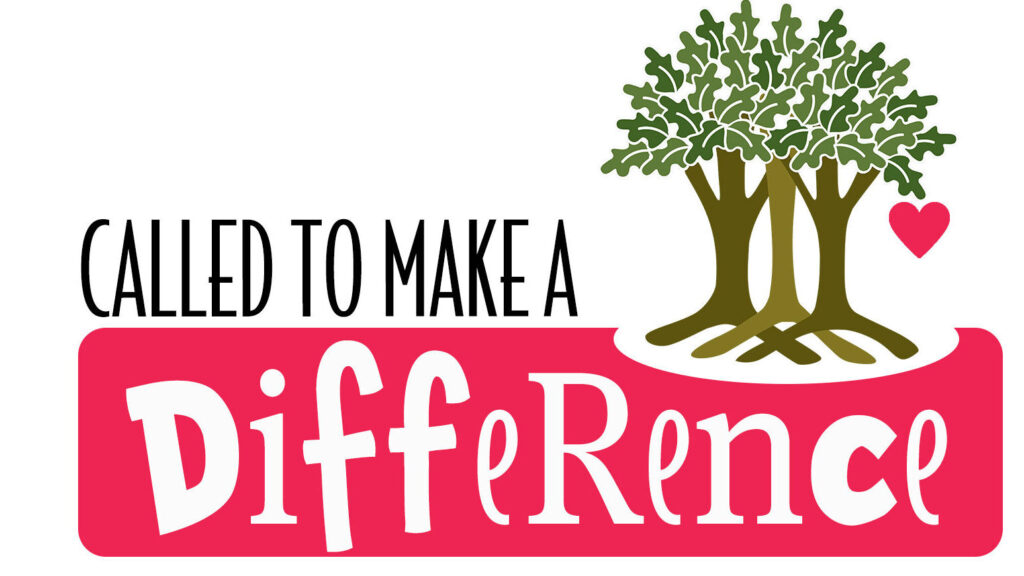
I was asked to write this article back in early August. I thought I had a good idea for things that make a difference here at Derry and I chewed on this idea a bit. Being fresh off the Youth Group trip (in full disclosure, two of the young people were my daughters), this would fall right out of my fingers and onto my screen, right? Not quite. It is now September 1 and one of you, without even knowing I was asked to write this, sent me a very nice card, with a brief message about a youth activity that let me know that my thoughts had congealed and I was headed in the right direction.
Here is my working title for this piece: Do You Make a Difference in the Lives of Our Youth? That question and my message here is not an appeal for new sign-ups for Sunday School teachers or Youth Leaders (although none of us would say that is a bad idea and we can tell you that the process of getting your clearances is not that bad at all), but this article is a call for reflection on the difference you make in the lives of our youth.
So what are the elements of our youth program here at Derry?
Sunday School? Check.
Youth Group? Check.
Food? Devotions? Check! Check.
Fellowship and Activities? Check.
So much more? Check, Check, and Check again.
Are you part of Derry’s Youth program? Check! You are!
Do you make a difference in the lives of our youth? Check! More than you know!!
My argument here is based on my observations at Derry and a reflection on my experiences growing up. You provide significant and valuable things to our youth and probably do not even realize it. You are just doing the things that you do as a person of faith. I recall attending church with my family and I remember those worshiping around me — even as I start to receive offers in the mail for senior discounts, their names and faces are still vivid in my mind. I still remember where most people sat each Sunday. I remember being led in hymns by Mr. Shebelsky in our gathering before Sunday School, and finding passages in the Bible with Mrs. Unger. Ushering with Mr. Edmands, the singing voice of the scout leader, who would later become my first boss. Other times, I remember smiles and kind words, or the good food that people shared during turine dinners (it took me a long time to figure out what turine meant). I was given the gift of experiencing the love of Jesus Christ in the people I met. They showed me what that looked like and what people living their faith meant, all without doing any one, particular thing. All these things are still part of me today.
It is a privilege to be involved with the youth here at Derry, and, I am certain others would tell you the same thing. I probably do not have enough space here or time to fully share what impacts me (and how), but here are the first things to come to mind from recent youth gatherings/events:
It is a gift to watch youth get to know each other over the course of a week, when packed in a van for at least 25 – 30 hours over the course of a week, needing to share bathrooms, walking in the woods, taking off across a lake in a kayak or on a paddle board, getting sand out of their shoes, helping to cook meals, and getting help finding the sunscreen. I am moved by their participation in devotions and worship planned by them. I often am given pause as I hear them sing the hymns I remember singing when I was growing up. I take so much from them when I hear their expressions of the intersection of their lives and faith when we go around the circle offering prayers, and it is particularly poignant when their prayers are heard by adults or they hear the prayers of adults. At other times, I am not looked at too weirdly when I join in a music experience that requires a stand up and clap, move to your left, turn around and jump required along with the singing, taking me back to memories from my younger years.
More and more each day, I realize how much I appreciate the involvement of others in the church as I was growing up and the experiences I have here at Derry. I not only appreciate the gifts that were given to me (and continue to be), I rely on them. The older I get, they are a comfort to me, but also provide a foundation for what I need in this world that seems to challenge us more each day. I suspect many of you feel the same way and rely on the gifts you have received and still receive. They make a difference.
Believe it or not, you make a difference to our youth program and are a vibrant part of it. By being here, worshiping, welcoming, expressing your faith, singing, eating together, working, or just chatting with others, you make a difference. I am pretty certain that our youth will reflect on what they have received from you in years to come, even the littlest thing may be significant to them. They will come to the same conclusion that you made a difference to them, I just bet, and will later make a difference to others, too.
Oct 2022 Financial Snapshot
October 19, 2022Cash Flow – Operating Fund as of 9/30/22
| ACTUAL | BUDGETED | |
| Income YTD: | $995,584 | $937,500 |
| Expenses YTD: | 849,896 | 970,457 |
| Surplus/(Deficit) YTD: | 145,688 | (32,957) |
Notes from the treasurer:
- Contributions are about $82K ahead of 2021 and $51K ahead of estimated contributions through August
- Mission and Peace is $24K behind 2021. Building & Grounds is about $38K below 2021. We do expect these committees to spend their 2022 budget.
11 Minute Lessons Return on Sunday with “Bible 101”
October 19, 2022
8:45 AND 11:45 AM IN THE CHAPEL
Join Pastor Stephen after worship on Sunday as he begins a new series of 11 Minute Lessons: “Bible 101.” Over the next few months, Pastor Stephen will provide answers to basic questions like, “What is the Bible?” “Who Wrote the Bible?” “Why does the Bible often tell stories more than once?” “Why are some Psalms so similar?” There’s a new question each week, and the answers will enlighten and perhaps even surprise you. Don’t miss it!
Make Desserts & Help Serve Dinner at the Racetrack
October 19, 2022
DEPART DERRY CHURCH AT 4:30 PM MONDAY, OCT 31
It’s the fifth Monday on Oct 31, so it’s Derry Church’s turn to bring dinner to the racetrack workers in Grantville. Our own Loretta Chubb is preparing the meal, and you can help by providing desserts and serving the meal. Questions? Ready to sign up? Contact Craig Smith
Help Clean Our Tombstones
October 19, 2022As part of our preparation for our 300th anniversary, which involves a massive cemetery restoration, we are looking for volunteers to assist with the cleaning of many of the older tombstones which have been recently repaired and/or reset. The first training date is set for 1:30 pm Friday, Oct 28. This is not a difficult task, but will take some time. Many hands will make light work. If you are interested in volunteering, please contact Kathy Yingst. Thank you for your consideration!
Safety First: Use the Handrails
October 19, 2022The Buildings & Grounds Committee takes the safety of Derry’s members and guests very seriously, and asks all participants in church services, concerts, and activities held in the sanctuary, to use the stairs by the hand rails when stepping up AND stepping down from the chancel. These stairs have been taped with black and yellow tape, similar to that used on the riser by the pulpit. Everyone’s cooperation is greatly appreciated.
Shawl Ministry Sets Winter Hours
October 19, 2022From November through February, Derry’s Shawl Ministry will meet at 3 pm on the second Monday of each month in the John Elder Classroom behind the Chapel. In the spring and summer, the group will meet at 7 pm. The next gathering will be held on Nov 14. Questions? Contact Sue George.
Weis Shoppers: Sign Up to Support our Preschool!
October 19, 2022If you shop at Weis markets and use their club card, Derry Discovery Days preschool invites you to participate in the Weis4School program, which leverages your grocery shopping dollars to help earn cash for the school of your choice.
Click this link to register: just enter you club card number and in the drop down section, choose Derry Discovery Days. It’s an easy way for our preschool to earn some extra money to purchase supplies and learning materials. Thanks, Derry!
Orange Day is Oct 25
October 19, 2022Do you know what Doris Feil would really like for her birthday on Oct 25? For everyone to wear orange! The 25th of each month is the day when we recognize the exploitation of females throughout the world and those working to end it.
According to the 2021 Trafficking in Persons Report, the number of individuals at risk of trafficking grew during the pandemic and so did the conditions under which traffickers thrive. They capitalized on the reduced capacity and shifting priorities of law enforcement resulting in greater anonymity and impunity to pursue their crimes.
Disruptions to public justice systems and diversion of funds lowered the odds of traffickers’ arrests. Organizations reporting on the increase include Global Initiatives Against Transnational Organized Crime, OSCE/UN, and IOM.
Females make up 71% of all trafficking victims. On Oct. 25 wear orange or an orange ribbon to show support of efforts to end the trafficking.
Derry Church Sends Logos Academy Children on a Field Trip
October 19, 2022Logos Academy sends their thanks to Derry Church for sponsoring a recent field trip to Lake Tobias. A number of their students have little idea about the world beyond the city. Seeing animals in the ‘wild’ at a place like Lake Tobias was quite the adventure for many students.
One of the first graders asked (before the trip) if cows lived in the jungle, which provides some context to the value of an experience like this for city kids. Two students with a fascination for sloths were beyond excited to see one! These siblings, independent of each other, covered their months in sheer joy of seeing these animals in a natural setting.
Logos Academy is one of Derry Church’s mission partners that strives to provide a whole child, quality and compassionate education in a Christ-centered environment.
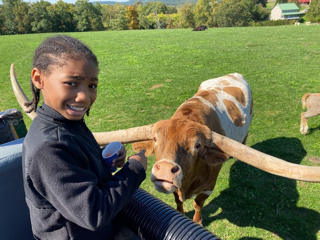
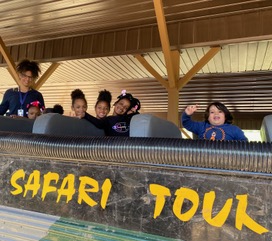
Sabbatical Notes from Pastor Stephen: Adaptation
October 17, 2022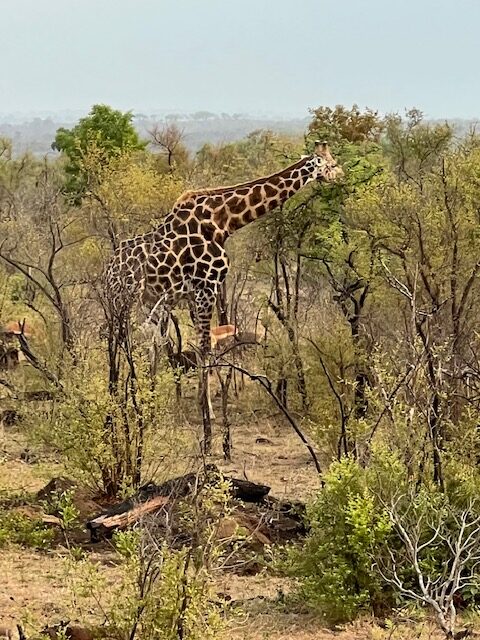
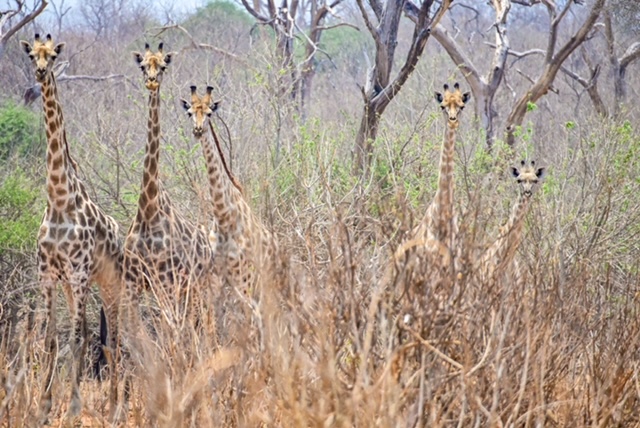
I am in awe at the beauty, resilience, and adaptability of God’s creation. This trip has wowed me with rocky coasts and cliffs, towering mountains, unique plants, colorful birds, and a myriad of fascinating creatures. Trips like this remind me of how much there is still to see, experience, and learn about creation. We can never exhaust the subject of God’s world because there’s always something new to see.
One of the interesting things I learned, while on a bush walk through the lowveld with a guide, is a unique back and forth struggle between an animal and its favorite food.
The sight of a giraffe browsing on the leaves of a majestic acacia tree is synonymous with Africa. It’s one of those things that was always in my mind when I imagined traveling to Africa. Giraffes love that tree more than any other and this fondness results in a fascinating ‘to and fro’ relationship between fauna and flora.
Giraffes can eat as much as 29 kilograms of acacia leaves and twigs daily. Herds of three or more giraffes spend hours browsing in acacia thickets, eating as much of the delicious leaves as they can. They don’t have it all their own way, however, because the acacia was not content to just be eaten!
Over time, the acacia tree has developed several clever defence mechanisms to prevent giraffes from munching on them unabated. As I’m sure most travelers to Africa can attest to (after painfully having it brush up against your arm on narrow roads when riding in open top vehicles), the acacia does not mess about when it comes to thorns. Taking their name from the Greek word for thorns – akis – some species grow thorns that are as long as 8-10 cm, and sharp as a knife. This make the tree much less enticing for animals to try and get to its leaves.
The wily giraffes have developed a counter to this though, by way of their incredible tongues. The giraffe’s tongue is about 45cm in length and highly prehensile. This allows the animal to successfully negotiate the bigger thorns and pull the leaves from the branch. Coupled with tough lips and palate that are basically numb to pain, the giraffe has seemingly overcome this particular hurdle set by the trees. But the acacia trees continued to adapt and change as the situation demanded.
Acacia trees have developed a further defense – the release of tannins. Tannins are water soluble, carbon based compounds found in plants that are very important to humans. Their chemical and physical properties allow the binding of alkaloids, gelatine and other proteins in the making of leather, or tanning. They are also used in food processing, fruit ripening and the making of wine and cocoa. But they’re no good to giraffes!
In the right amount, tannins can taste good — like in wine or tea — but sometimes when you drink a particularly strong red wine your mouth can feel a bit dry and bitter. That’s the tannins. When on our bush walk our guide had us chew on a particular leaf, then laughed at us because after a few munches we all had cotton-mouth. It was not a pleasant experience.
Besides tasting awful, tannins inhibit digestion by interfering with protein and digestive enzymes and binding to consumed plant proteins, making them more difficult to digest. When a tree starts feeling threatened and notices it’s getting damage from a giraffe, it releases more tannin into the leaves so the giraffes will stop eating it. What’s even more amazing is that acacia trees release a pheromone that is spread downwind to others trees, signaling them to release their tannin to protect themselves. The simultaneous tannin release by all nearby acacias essentially thwarts the greedy giraffe(s), who must now travel upwind to trees that have not yet been warned. This is why older and wiser giraffes have now learned to always eat upwind of other giraffes.
This back-and-forth battle between the giraffes and acacia trees reminds me of the need to change and adapt. The world around us is always changing. Sometimes that change can feel like a new opportunity and other times it can feel like an obstacle to overcome.
I believe a lot of the conflicts we have as a society come down to our inability or unwillingness to adapt. Sometimes we get frustrated over small things, like the need to adapt to new technologies when we finally got comfortable with the old ones. We resent when we have to adapt to new norms in culture, whether it’s the music or the fashion. I think every generation has complained about the music the next generation prefers.
In South Africa it’s been hard to adapt to the new black majority democracy. They are still trying to find their way. In the US we have to adapt to changing demographics, more diversity of religions, and new priorities. The choice is often to either adapt, fight for things to stay the same, or remain bitter, resentful, and withdraw as much as we can.
I’ve seen all three in the church. Church is not immune to change or the changes in society. The church certainly had to adapt to Covid. We have to adapt to new needs and challenges people are faced with, new constraints on time, and more. And when the church adapts and changes, people react in those same three ways. Some choose to fight the changes and try to keep the church exactly as they like it: same music, same activities, same look, same everything as if the church can be frozen in time as the world marches on. Others choose to be bitter and resentful about the changes and they withdraw more and more from the church until they are completely separated from the community. Others find a way to adapt to the changes in ways that best suit them and their needs. Everyone’s experience of church is different and that’s natural and okay. Some continue to livestream for various reasons, some attend Tuesday nights, some want to do as many things as possible while others find Sunday mornings more than enough.
Our church is as diverse as the natural world, so everyone’s experience of church is different. Just like the natural world, if we adapt, we can all inhabit this world and church together. It’s not always easy or quick, but we can find the right balance and live together in peace and harmony.
READ MORE SABBATICAL NOTES:
Sabbatical Notes from Pastor Stephen: Victoria Falls
October 15, 2022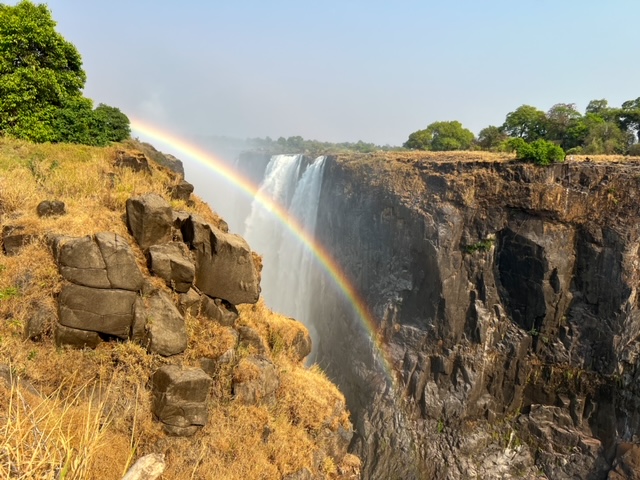

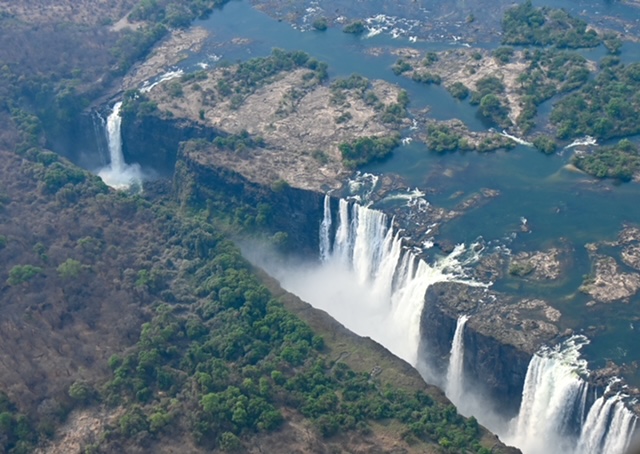
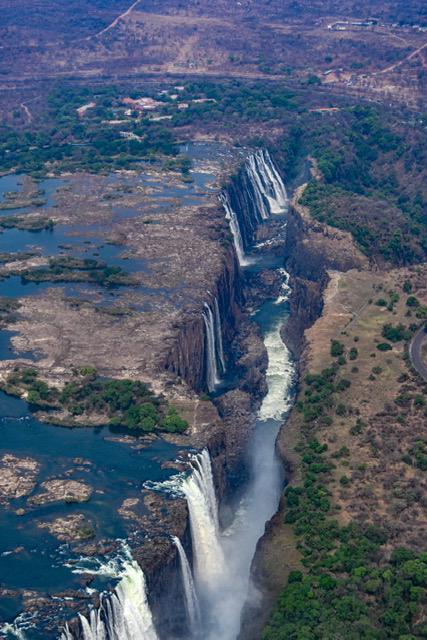
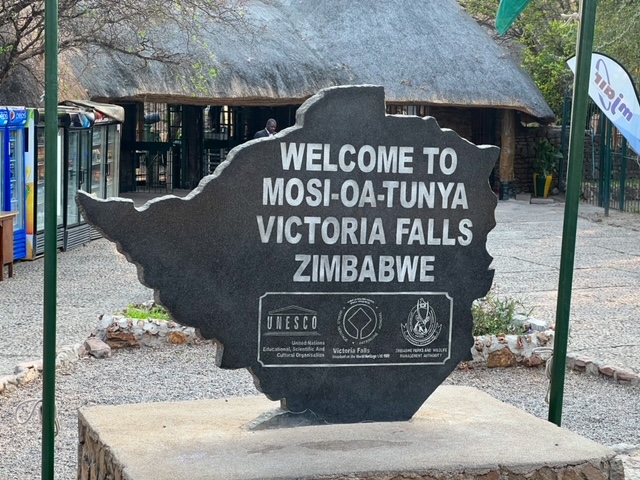
Today I went to Victoria Falls, but it’s known locally by other names in the languages of the various tribes such as Mosi-oa-Tunya meaning “the smoke that thunders.” Chongwe/Seongo is another historical tribal name meaning “the place of the rainbow.”
It is clear from archaeological sites around the Victoria Falls that the area has been occupied from around three million years ago. Stone artifacts from that time have been found as well as items from the Middle and Late Stone Age.
Stone Age inhabitants were eventually displaced by the Khoisan, who were hunter-gatherers that used iron implements. Later, Bantu people moved into the area and the Batoka tribes became dominant. Over time other tribes arrived including the Matabele and the Makololo. Descendants of these tribes are still living in the area today.
Members of the Makololo tribe were the ones who actually took the intrepid explorer David Livingstone, in dugout canoes, to see the falls. Livingstone, a Scottish missionary, was on a journey to find a route to the East Coast of Africa. Between 1852 and 1856 he explored the Upper Zambezi through to the river mouth. The falls were well known to local tribes and it was Chief Sekeletu who escorted Livingstone on November 17, 1855 to the viewing site.
Livingstone, on seeing the massive waterfall, named it after the British Monarch at the time, Queen Victoria. Later he recorded in his journal these famous words:
‘No one can imagine the beauty of the view from anything witnessed in England. It had never been seen before by European eyes; but scenes so lovely must have been gazed upon by angels in their flight.
David Livingstone
David Livingstone is known as the first European to see Victoria Falls. He returned again in 1860 for a more comprehensive study and was accompanied by John Kirk, a fellow explorer. Other European visitors that followed included a Portuguese explorer, and Emil Holub, a Czech explorer who made the first detailed plan of the area. Also British artist Thomas Baines, who painted some of the earliest pictures of the falls.
But was Livingstone the first European to see the falls? Probably not. Portuguese explorers came through on their way to Mozambique quite often, they just never recorded what they saw or told anyone. For right or wrong, credit often isn’t given unless you become a witness and share what you’ve seen, heard, or experienced. The local indigenous people knew of the falls, but that knowledge never spread beyond their local borders. The local tribes still give Livingstone a lot of credit because he helped make their falls famous.
That gets me thinking about the importance of sharing our own experiences. I hear so many Christians say that they don’t talk about their faith because it’s a personal thing. Well, that’s the exact opposite of what the Bible says. Christianity was never meant to be done alone. It’s not personal; it’s communal.
We are supposed to share the good news. We are supposed to report what we’ve seen, heard, and experienced of God or it doesn’t really matter. The good news of the Gospel is too big and too wonderful not to share. That’s what Livingstone thought about the falls. He had to report back and share what he’d seen. It was too good to keep to himself. That’s how we should feel about the Gospel, about our faith, and church. It doesn’t mean we are pushy or forceful, but we need to share. We need to talk about experiences of forgiveness and reconciliation. The world needs to know. Because once we know the good news, once we know peace and reconciliation is possible, then we are more likely to go and search for it ourselves and find ourselves at that place of peace.
Once word got out about the falls, Anglo traders started to arrive in increasing numbers and a rustic settlement was built on the riverbank (now Zambia) called Old Drift, the crossing place for the Zambezi River prior to 1905.
Visitors from what was the Transvaal region of South Africa began to make their way by ox wagon, on horseback or on foot, to see Victoria Falls. However, malaria was a serious problem in Old Drift causing the settlement to be relocated to its present site, now the town of Livingstone, Zambia.
Victoria Falls really came into its own when Cecil John Rhodes, a politician and entrepreneur ,commissioned the building of the now-famous landmark Victoria Falls Bridge, to cross the Zambezi River. The Victoria Falls bridge was completed in 1905 and became a major transport route for road and rail traffic, trade and enterprise in Africa. That bridge is still standing today and is used daily by cars, trucks, and pedestrians crossing from Zimbabwe to Zambia. I also made the trek over the historic bridge.
The falls are magnificent, and we went during the low water period. When it’s high water you can barely see anything through the mist. God’s world is truly amazing. There’s so much to see and learn and experience. There’s so much worth sharing and reporting and so others want to experience the majesty of creation. I’ll talk about that more tomorrow.
READ MORE SABBATICAL NOTES:
Sabbatical Notes from Pastor Stephen: Travel Groups
October 14, 2022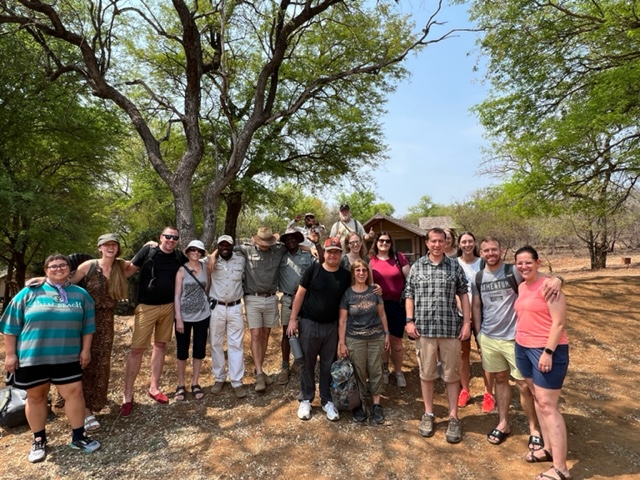
I’m always a little worried when I do a group travel experience. What the group will be like? Will we get along? Will someone really annoy me? Will I really annoy everyone else? Will the group actually spoil the experience? I have these fears, but each time I’ve travelled with groups of strangers I come away from the experience with new friends. Every group I’ve been with has worked well together and actually added to my trip, not taken away from it.
I’ve been thinking about why that’s the case. Perhaps I have just been lucky. I’ve heard horror stories of bad groups and people on trips who just don’t get along very well. There is often perhaps one person you may clash with, but there are enough other people to balance that out. My mother has been on more trips than me, and has had similar experiences with her groups. She still connects with people from trips she went on long ago.
On this trip we had young couples, an adult family of four, and single people. We had ages ranging from late twenties to early 70s. We had people from the US, Canada, Germany, Switzerland, and England. We all had diverse jobs and travel experiences, but we really came together as a group and enjoyed each other. Having such a diverse group made the trip more enjoyable. It was fun to experience these once-in-a-lifetime things with strangers who have become friends.
Perhaps travel brings out the best in people. We all want a great trip and are full of excitement. But then again, travel can also be stressful. Maybe it’s because we are in a low stakes environment. We aren’t competing for limited resources and our interactions won’t have long-term consequences. Maybe it’s because we feel free to disengage from the contentious political issues of the day; We aren’t paying attention to the latest election news and don’t feel the need to discuss it. Maybe we all feel less stressed, so we are our best selves when together. There are many possible reasons and factors, but it reminds me that we can live better together. It is possible.
In all likelihood I will never see any of these people again, but they will forever be part of one of the best experiences of my life. I’m glad each of them were a part of it. For a short while we were a community that cared for one another, helped one another, and celebrated with each other. It reminds me that we have more in common than we sometimes think. We have so many common goals and dreams and we often let a few issues, though important, divide us and keep us from community together.
Maybe I’ve just been lucky, but I choose to believe that if we put some of the stress, competition, and contentious issues behind us then we could be a good and beautiful community with almost anyone. I know we can’t live in a world where there is no stress, competition, or contentious issues, but perhaps when we believe and learn it is possible for us to be a loving community together we can do it despite and even with those challenges. Traveling with groups gives me that hope and experience. It’s not easy to replicate at home, but maybe that’s because we don’t try as hard as we could. We stay in our bubbles and assume the worst about each other. Maybe we just need a chance to be forced out of our bubbles with others for a while and experience the good and beautiful community diversity offers and affords.
READ MORE SABBATICAL NOTES:
Sabbatical Notes from Pastor Stephen: Ubuntu
October 13, 2022I spoke two weeks ago in worship about the Truth and Reconciliation Commission that Archbishop Desmond Tutu led in South Africa. The Commission allowed people to share their story and hear the stories of others, often the ones who did them and their loved ones harm.
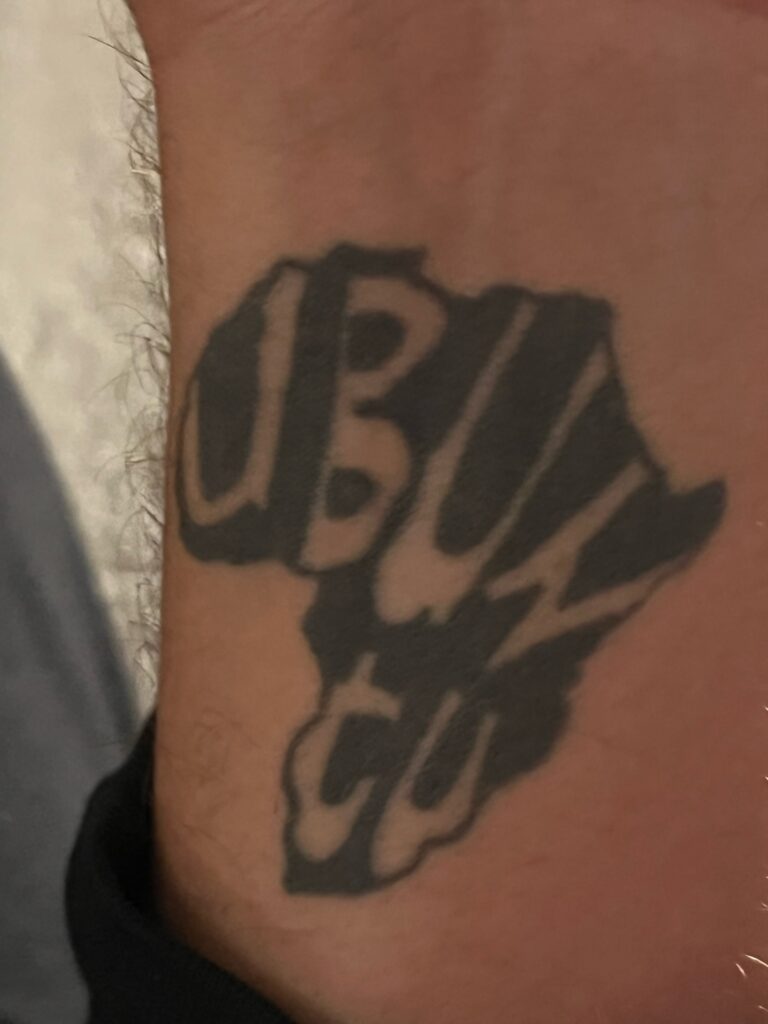
Tutu shares about the story about Mrs. Mhlawuli whose husband was killed. She spoke about the disappearance and murder of her husband, Sicelo. She recounted all the ways his the autopsy showed he had been tortured, from apendages being cut off to having acid poured on his face. Then it was his daughter’s turn to speak. She was eight when her father died. Her brother was only three. She described the grief, police harassment, and hardship in the years since her father’s death. And then she said, “I would love to know who killed my father. So would my brother.” Her next words stunned Tutu and left him breathless. “We want to forgive them. We want to forgive, but we don’t know who to forgive.”
I’m often shocked and outraged by what humans can do to one another. We’ve seen it recently with the war in Ukraine and the reports of the bodies found in graves that have signs of torture and mutilation. But, I am often in awe at humans’ capacity to heal and mend and love. This family wanted to forgive after so much loss and pain. They wanted a new future, a better way of living together with one another and God. I think we all want that, at least I hope we do.
I believe we want this because our inherent nature is to be in good and beautiful communion and community with another. When we witness the anguish and harm we have caused, when we ask others to forgive us and make restitution, when we forgive and restore our relationships, we return to our inherent nature.
Our nature is goodness. God made us good. Yes, we do much that is bad, but our essential nature is good. If it were not, then we would not be shocked and dismayed when we harm one another. When someone does something ghastly, it makes the news because it is the exception to the rule. We live surrounded by so much love, kindness, and trust that we forget it is remarkable. Forgiveness is the way we return what has been taken from us and restore the love and kindness and trust that has been lost. With each act of forgiveness, whether small or great, we move toward wholeness. Forgiveness is nothing less than how we bring peace to ourselves and our world.
I have been shocked, amazed, and overwhelmed by the stories I have heard here. In South Africa, the society came together to intentionally choose to seek forgiveness rather than revenge. It was not unanimous and perfect, there are still problems in South Africa, but that choice averted a bloodbath. For every injustice, there is a choice. Every day, we can choose forgiveness or revenge, but revenge is always costly. We see it in politics and personal life. Choosing forgiveness rather than retaliation ultimately serves to make you a stronger and freer person. Peace always comes to those who choose to forgive. I met so many gracious and kind people of all races and backgrounds here in the rainbow nation, so I see how they were able to come together. Of course there are still disagreements and problems, but the people here are wonderful. I am confident they will continue to find the right way forward together.
In South Africa, I learned that Ubuntu is their way of making sense of the world. The word literally means “humanity.” Our guide had this tattooed on his arm inside a picture of the African continent. It is the philosophy and belief that a person is only a person through other people. In other words, we are human only in relation to other humans. Our humanity is bound up in one another, and any tear in the fabric of connection between us must be repaired for us all to be made whole. This interconnectedness is the very root of who we are.
This is why reconciliation is so important. We belong together and to one another. We are bound to one another, and we must find ways to choose to forgive and reconcile so all those tears in the fabric of connection can begin to be mended.
We can start small. Reach out to those who we need to reconcile with and forgive. Listen to the pain and admit when we have caused it. Choose mercy instead of revenge. Choose connection not separation. Choose love.
READ MORE SABBATICAL NOTES:
Sabbatical Notes from Pastor Stephen: Hunting
October 13, 2022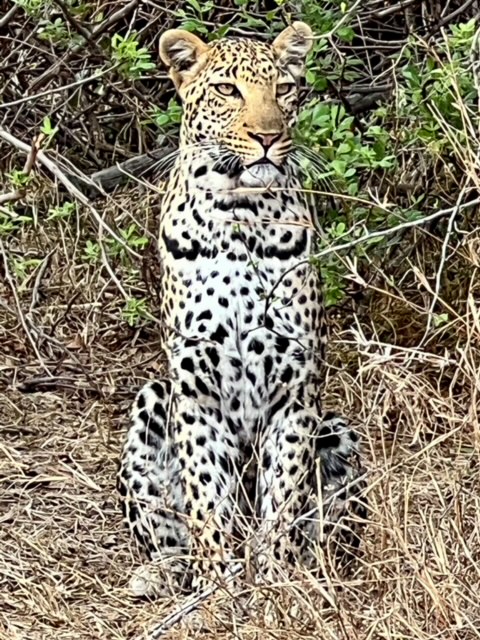

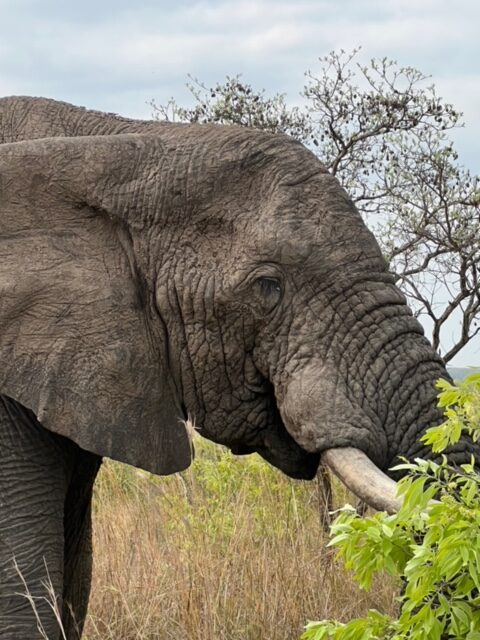
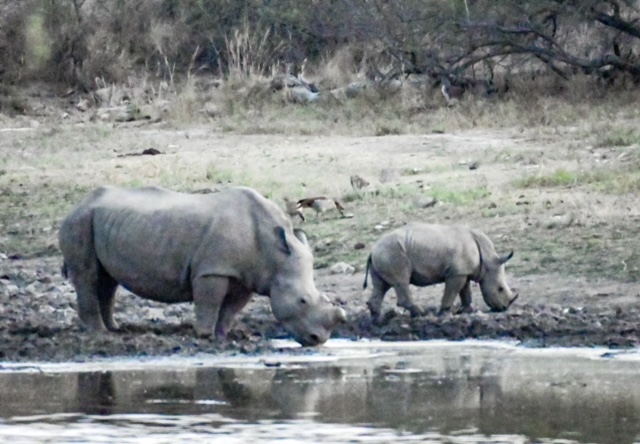
I don’t know about you, but I often find myself making judgments about people and situations without much information and experience.
One example of this is how I’ve felt about people who hunt African animals. Perhaps you’ve seen the pictures on social media of someone next to some large African mammal like a lion or elephant. Stamped on the picture is the person’s name and the instructions to spread their shame. I admit having negative feelings toward those people. How could they? Why would you want to kill such a beautiful animal? Why would you take away the opportunity for others to see it?
The problem was that I didn’t know those people or their motivation. I didn’t know the situation of the hunt or the rules. And yet, I made negative judgments about them. We do this all the time. With the bare minimum of information, we judge one another and, in the process, judge ourselves superior: morally, ethically, politically, or religiously.
So I decided to ask our guide about hunting in South Africa. First, we need to clarify the difference between hunting and poaching. Poaching is the illegal killing of an animal, whether it’s for a small piece of the animal (like the horn of a rhino) or for the meat to sell or feed a family (like a kudu or springbock). Hunting is a legal activity.
In South Africa, hunting is only allowed on game reserves and it’s strictly regulated. Just like in Pennsylvania, wildlife experts determine the carrying capacity of habitats and use hunters to bring down numbers when necessary. These hunters then are able to use the meat to feed their families. Trophy hunting (for lions, elephants, etc) is similar. On some occasions there are too many males of a particular species in an area and instead of having them kill each other, a hunting permit is given. The hunter can only take that specific animal in a specific time period. Or sometimes an animal is older and the wildlife management team knows it will soon be killed by others or die naturally. Again, the hunter has to find that specific animal or they are out of luck.
The money from the permits is then used by the reserves for conservation and continued protection of all the animals.
It is perfectly justifiable to be against all kinds of hunting, or just trophy hunting. Everyone is entitled to their own opinion, just as some people choose to be vegans and others love to eat meat. But, either way, it’s important to have the right information before judging, and especially, criticizing others.
We often just don’t take the time to listen to those we judge, seek the right information, or ask the right questions. I hope our Engage Stories programs are a way to listen to others and practice asking the right questions of each other so we can learn and have more informed opinions.
READ MORE SABBATICAL NOTES:
Kathie parsons • Derry member
October 13, 2022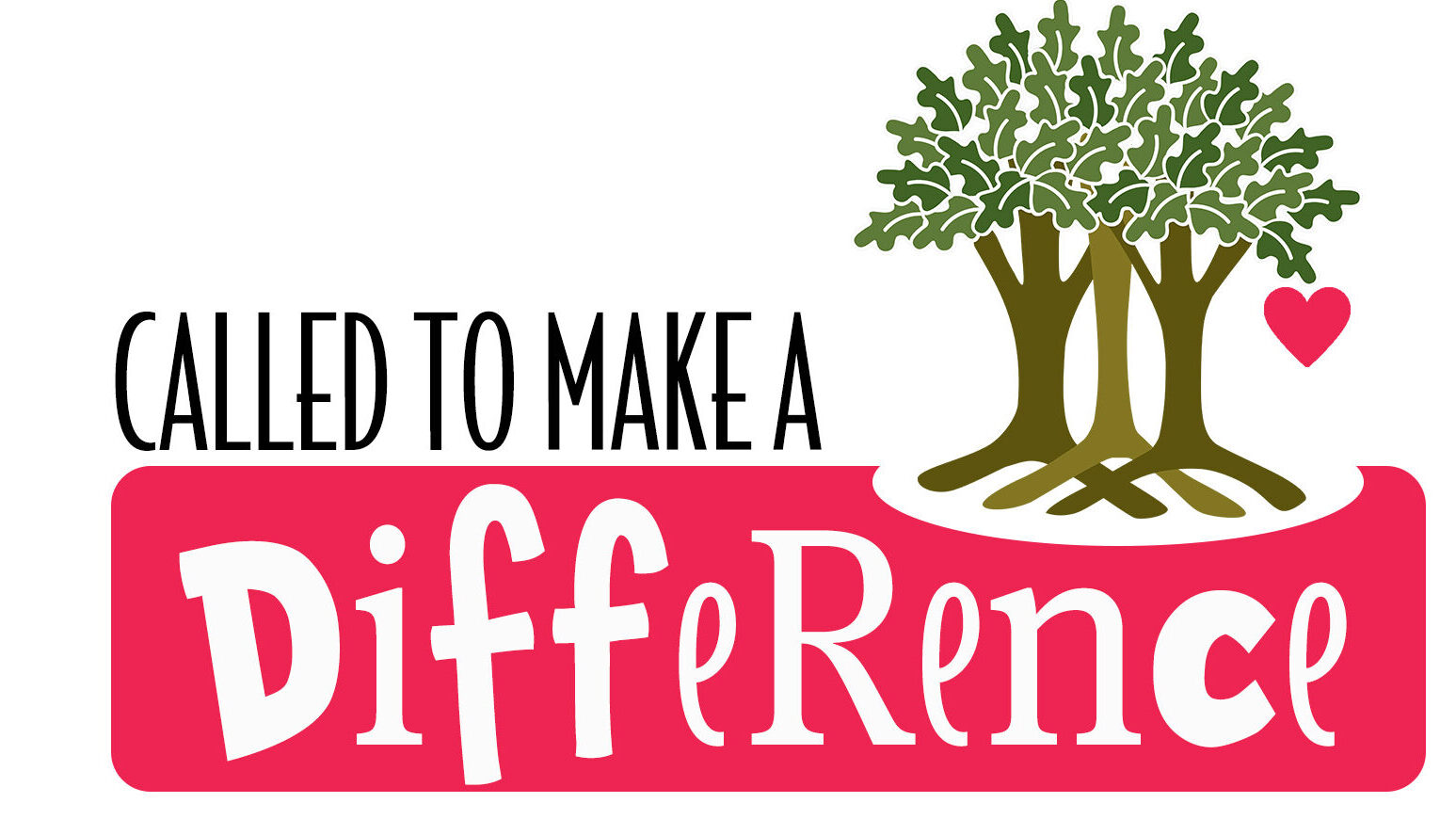
I recently had my hearing tested. The audiologist asked me how my summer was going. I told her that, quite suddenly, I was very busy. My church had become involved with a Syrian refugee family and I was drawn to become involved. She thanked me. Thirty years ago her family was sponsored by a church when they were refugees after the Vietnam war ended. She said most refugee families do not have sponsors. Because hers did, they were able to survive and thrive in the new country where they knew little of the language or the customs.
Syrians have fled by the millions since the Arab Spring 12 years ago was violently quashed. Russia has armed the suppression of Syrians wanting a more democratic government. Derry Church was made personally aware of the Syrian refugee crisis in January when Church World Service (CWS) Lancaster gave a presentation at Sunday school (watch part 1 and part 2).
The Mission and Peace Committee (MAP) took note. Some contact was maintained over the months. CWS opened a new office in Harrisburg in preparation for resettling refugee families, including several Syrian families. We received word in July that partners were desperately needed to help with families. Pete Feil and Marilyn Koch, with the encouragement of MAP and Pastor Stephen, put out the word. Derry Church had been called. But did we want to answer? Could we answer on such short notice? It seemed impossible.
They needed a place to live, help to access the seed benefits the United States makes available to the small number of refugees each year. They would need help to become independent: get jobs; enroll their children in school; access medical care; have access to transportation; learn English, and so much more. MAP and a number of interested Derry and All Saints Episcopal Church members, despite this seemingly impossible mission, said yes. We would commit to help resettle one family.
The Mohamad Haikal family arrived on July 27. The parents and four children, ages 4-12, traveled over 24 hours. Each had a duffel bag with their worldly possessions. They’d been waiting in Egypt for 10 years to come to the United States. Since then, our band of volunteers have been part of the adventure of a lifetime.
Many people have been involved in resettling this family. Surprisingly we have encountered a number of Arabic-speaking people who have helped us navigate various situations. We now have a dedicated English as a Second Language (ESL) group, headed by Sue Whitaker, and augmented by members of the All Saints Episcopal Church in Hershey. The school district also provides ESL support. Love INC has provided transitional housing for the family. Hope Within provided initial medical treatment. The Central Pennsylvania Food Bank, the Hershey Food Bank, and Cocoa Packs have provided food and clothing. Many other donors from both churches have provided funds, food, clothing, household goods, bicycles, and transportation to the mosque, as well as a variety of appointments for health, school, job, and social assistance programs.
All of this has made a huge impact on the Haikal family and the volunteers. None of this would’ve been possible had the call not been answered. And because we answered, mini miracles, if there is such a thing as a “mini” miracle, have occurred. Mohamad has a job but more support will be needed. Permanent, affordable housing and a car large enough for the family of six are needed.
God has brought us this far. God will continue to call. Will Derry Church continue to answer? “Ask and it will be given to you; seek and you will find; knock and the door will be opened to you.”
2023 Stewardship Campaign
October 12, 2022
In the past week, you should have received a stewardship mailing including a letter, magnet, and pledge card. Stewardship Sunday is Nov 13, the day our pledges will be dedicated for 2023. That afternoon we’ll celebrate with the “Basically Broadway” talent show.
Your financial support is essential for furthering the mission and ministry of Derry Church. Please take a moment to pledge online, mail your estimate of giving card to the church, or bring it with you on or before Nov 13 and place it in one of the offering boxes. Estimate of giving cards are also available at church.
Questions? Did we miss sending you a mailing or a magnet? Contact Sandy Miceli.
If you have been using our online giving platform and you are making a change to your pledge for 2023, you will need to apply that adjustment in your Vanco account. Thank you for your ongoing support of Derry Church.
Second Friday Meals on Wheels Volunteer Needed
October 12, 2022Derry Church teams deliver meals to homebound residents in Derry Township every Friday. The team that delivers meals on the second Friday of each month is looking for a new driver to join them.
Deliveries begin at 8:30 am at the Church of the Redeemer United Church of Christ on Chocolate Ave in Hershey, and takes about an hour. Substitutes are available when you need a month off. Click here to read more about how Derry Church participates in the program. For more information and to volunteer, contact Mary Day.
Rock & Roll Halloween Dance Benefits Downtown Daily Bread
October 12, 20224 PM SUNDAY, OCT 30 AT THE ENGLEWOOD, 1219 WEST END AVE, HERSHEY
In the Harrisburg community, Downtown Daily Bread is the only walk-in shelter, soup kitchen, and services for all hungry and homeless individuals. Come on out and support one of Derry’s mission partners: enjoy a fun evening featuring music by Tom Slick and the Converted Thunderbolt Greaseslappers. Costumes encouraged! Admission $30: purchase online or at the door.
Sabbatical Notes from Pastor Stephen: District Six
October 11, 2022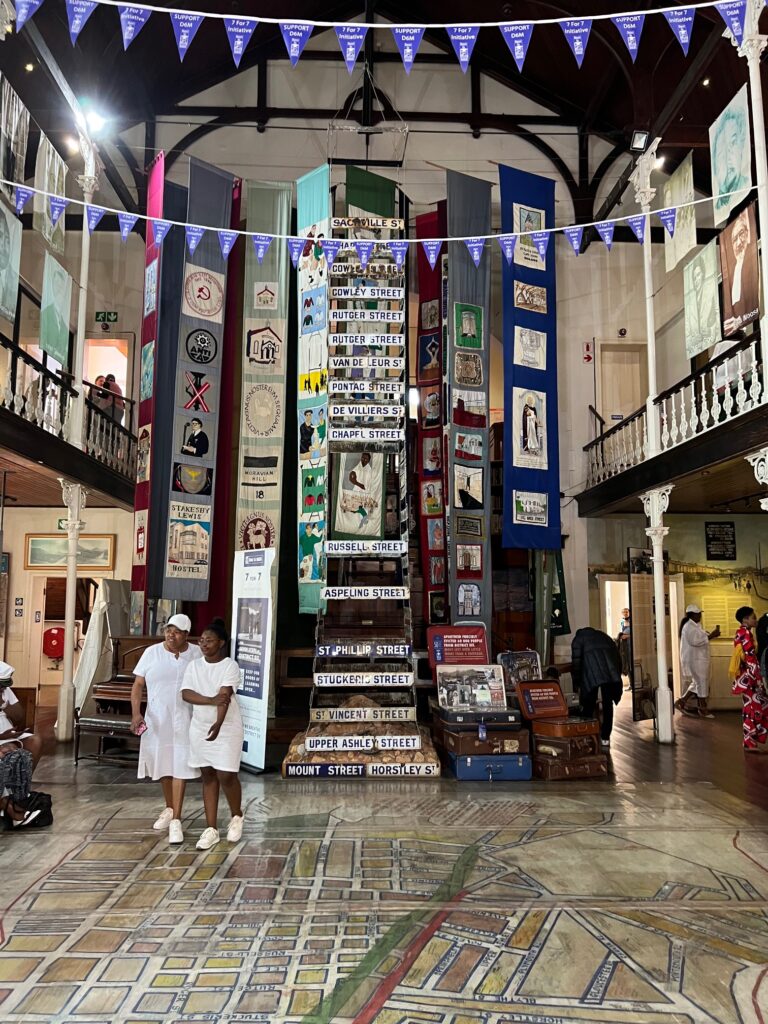
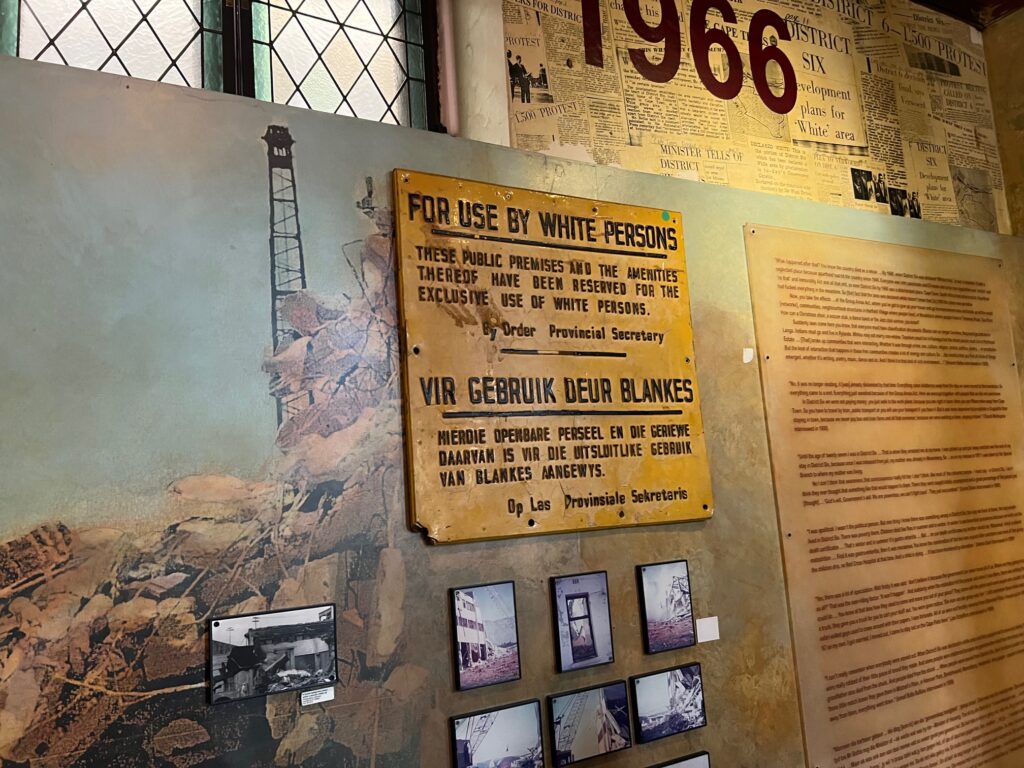
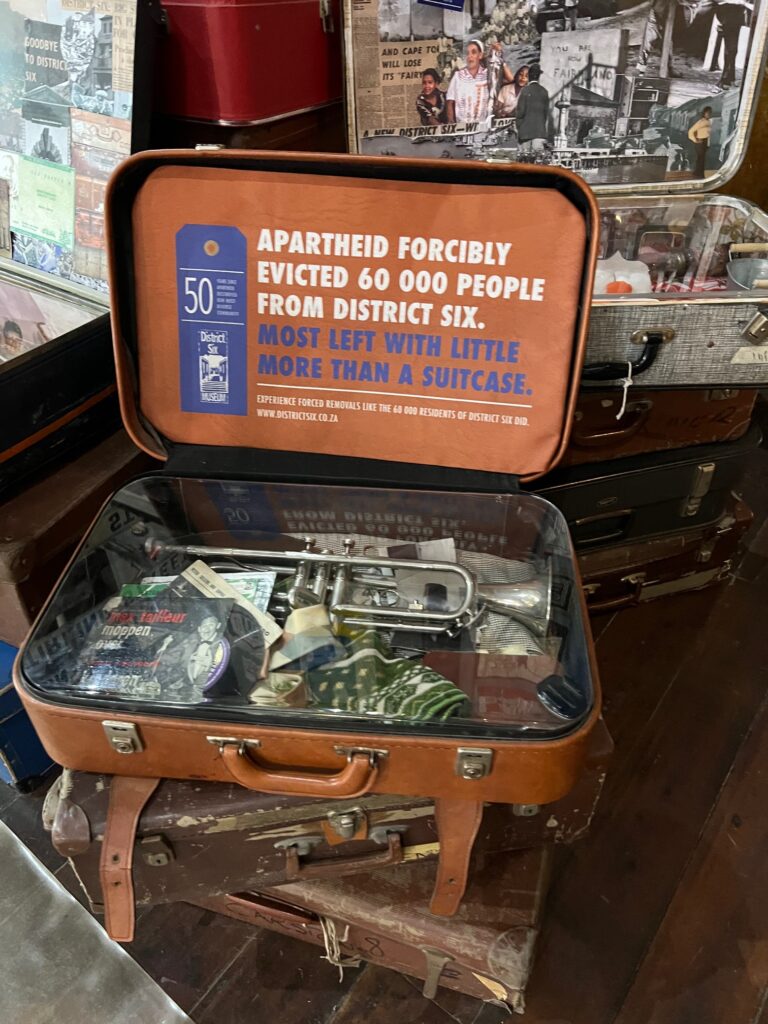
I had the opportunity to visit the District Six Museum in Cape Town and tour it with a former resident. The museum is located in an old Methodist church that survived the destruction of the area. It’s odd because all around you can see the modern skyline of Capetown and nice cafes, but the scars of apartheid still exist in dilapidated buildings and lifeless vacant spaces in the midst of an otherwise bustling city. District Six was one a thriving melting pot, a community where everyone knew their neighbors. Generations had lived there together.
The vacant lots are the remnants of the forced removals which took place in District Six in the 1970s.
The area known as District Six got its name from having been the Sixth Municipal District of Cape Town in 1867. Its earlier unofficial name was Kanaldorp, a name supposedly derived from the the series of canals running across the city, some of which had to be crossed in order to reach the District (kanaal is the Afrikaans for ‘canal’.) Over time, some people called District Six Kanaladorp, (kanala being derived from the Indonesian word for ‘please’), and its likely that the name stems from a fusion of the two meanings.
So what happened in District 6? We have to go way back to understand the not-so-far-back.
Since the 17th century, European colonists coveted South Africa. The Cape of Good Hope, the Southwestern tip of Africa, was once the starting point for ambitious sailors with dreams of arriving in the mysterious East. South Africa was successively colonized by the Dutch in the 17th century and by the British in the 19th century. The discovery of diamonds in the 1860s in Kimberley and the discovery of gold in the 1880s in Witwatersrand and Johannesburg only made the country more attractive to colonists.
People from around the world found a home in the area. District Six, one of the main municipal districts in the center of Cape Town, housed diverse people from Dutch colonies in India, Indonesia and Malaysia. Many Muslims also dwelled in Cape Town, and traveled from Indonesia, the country with the largest Muslim population in the world.
The wealth of religious diversity developed into inclusiveness rather than hostility, said former resident Noor Ebrahim. Ebrahim grew up in District Six and went to a mosque in northern District Six with area families as a child. Today, he works in the District Six Museum and still goes to the mosque from his childhood every day.
“We loved each other in District Six,” Ebrahim said. “When my Christmas comes, they call it Eid. All my friends, Jewish, African, Christian, Hindu, you name it, they would put on a fez, and they would go with me to my mosque. I think that made District Six such a great place.”
The 1950s marked the era of apartheid in South Africa. The government began to racially classify all residents in the country. South Africans were declared white, black, Asian or colored. Most residents of District Six came to be classified as so-called colored or mixed blood. Legislation (including the Population Registration Act, Bantu Education Act, Group Areas Act and Immorality/Mixed Marriages Act) was designed to segregate Europeans from non-Europeans.
“Within that apartheid framework, they thought society would be contaminated by the colored people,” said Joe Schaffers, former resident of District Six and education officer at the District Six Museum.
Classification was arbitrarily based on appearance and judged by government officials. Herman, for instance, spoke Afrikaans and was not initially classified under the system. In 1951, when he was eight years old, he went to have what was called “the pencil test.”
Officials used the test as a way to determine a person’s racial grouping. If a pencil could be run through a person’s hair with ease, a person would be declared white. If the pencil became stuck in a person’s hair, they would be called colored or African. Herman and his parents were categorized as “Cape Colors” as a result of the test.
Although many of Herman’s family members were labeled as colored, his uncle married a white woman and was classified as white. “Many of us rejected that,” Herman said. “They denied their own roots and took on the identity of oppressor, which was the white people. In my family on both sides, there were divisions and people who never really met.”
The subjective nature of the racial groups allowed some people to manipulate the system. Many people took the pencil test in an attempt to be labeled as white since the apartheid system afforded special privilege to this group. White South Africans were given better jobs, education and housing. Some of the White South Africans admitted to looking to the US as a template for their racial discrimination.
The apartheid government took further steps to divide the population following this period of population classification. On Feb. 11, 1966, the government declared District Six to be a white-only residential area under the Group Areas Act. Around 60,000 non-white residents of District Six were forced to move to townships outside of the city center. Residents were moved into the townships according to their racial classification. These townships were located in the dry and dusty Cape Flats area outside the city and often had poor infrastructure.
As a result of these acts, residents could only go to schools, churches and other public spaces reserved for their racial groups. Skin color and bloodlines determined the boundaries of a person’s life. If a white man wanted to visit his wife who had been classified as “colored,” he had to apply for a permit to even enter a colored township, said Schaffers.
Most of District Six’s residents were classified as colored under apartheid. As a result, most residents were affected by the forced removal. Apartments, churches and shops were leveled to the ground in the years after the Group Areas Act. New buildings such as the Cape Peninsula University of Technology were built upon the destroyed buildings, including Ebrahim’s home.
“If you owned property in these areas, they’d ask you to move and offer you a place of lower value,” Schaffers said. “If you refused, they would take this property and offer you an even worse offer than the first one.”
Once people were relocated to the Cape Flats, the government failed to sufficiently support the area’s explosive population. Basic necessities like electricity could be scarce, and the townships breed poverty and gangsters.
“It’s not meeting the needs of people living there,” said Chrischené Julius, manager of Collections in District Six Museum. “It becomes a space that really becomes a symbol as what the Group Areas Act actually achieved.”
Society has gradually improved since apartheid ended in 1994. The current government has pledged to create access to good education and jobs for all people, but change is never swift or complete.
The District Six Museum was established in December 1994 to preserve the memory of District Six and to remember the lessons of segregation. The museum plays a role of education and shows people that the city center is a public space for all people, not a specific race. They focus on people’s stories and memories so the museum is more like a memory box than traditional history museum. Sometimes memory contradicts records, but they allow the memory to remain intact as it is remembered by different residents even if those memories contradict each other. The museum keeps alive the stories and struggles of the residents who lives with the racism and corruption of apartheid.
“The apartheid racism is not something that only white people show towards black people” Julius said. “It’s part of our culture.”
Although the government has issued the Land Restitution Act as a measure to allow former residents to move back into the area, execution is still lagging. Only 200 residents have been able to live back of the 60,000 removed. Many former residents have died, complicating how ownership of the land should be determined. Living expenses in the area in the area are also high, and many who have lived in the Cape Flat area for decades cannot afford to move back to their former lands. The act also fails to address where current residents should relocate and how land covered by new buildings can be allocated to former residents. There are still 1,260 validated claims to land in the area.
Many of the residents feel like they cannot reconcile yet with the government that took them from their homes and neighbors because restitution has not been made. They say it’s an unfair to talk to them about reconciling when the wrongs have not yet been made right. The pain and loss is still very real, so they feel there can it be peace and mercy without any justice. Imagine having so much taken from you, then being asked to just forget it and live in your new, more difficult reality, but also being expected to forgive and let the loss go for the sake of peace. It’s an unfair ask and not one someone who has ever experienced something similar would ever ask. Those kinds of desires and demands on others come from a place of privilege that prioritizes its own peace and well-being over justice.
Learning about District 6 did not feel very foreign to me, as horrible as what happened here was. I grew up learning about forced removal of the Cherokee Nation in my native South Carolina, and many other forced removals of native peoples across the US, so their land could be redeveloped. I’ve learned about redlining and ghettos and the Jim Crow south. We have our own culture of racism, and when we say we are in a post-racist society, we aren’t being honest with our past or our present. We haven’t righted many of the wrongs our society is guilty of, even if we ourselves had no direct role in it. I think we can acknowledge the ways we have improved and progressed, but as in District 6 there is still work to be done. Peace and mercy are important but we need to learn and acknowledge the truth and work for justice if we really believe in reconciliation.
READ MORE SABBATICAL NOTES:
SaBbatical Notes from Pastor Stephen: Safari
October 10, 2022
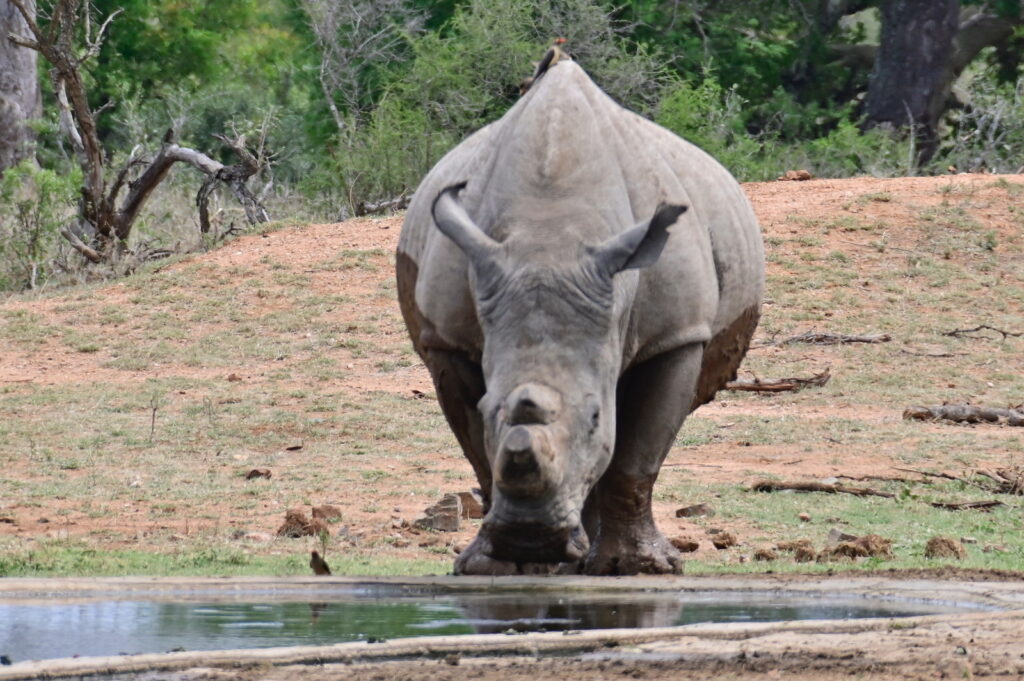
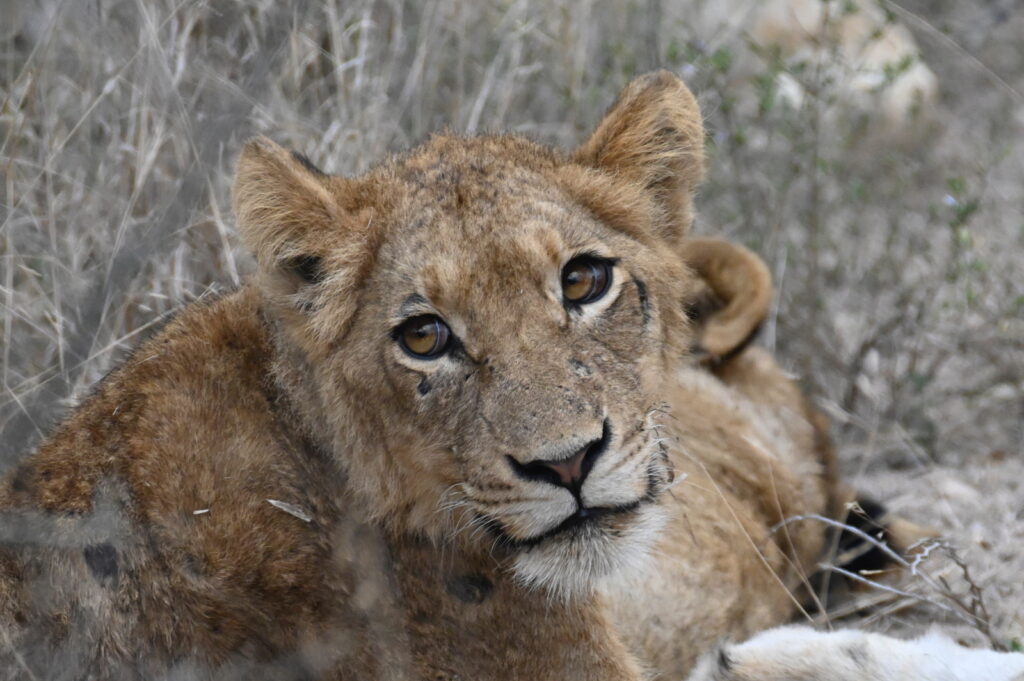
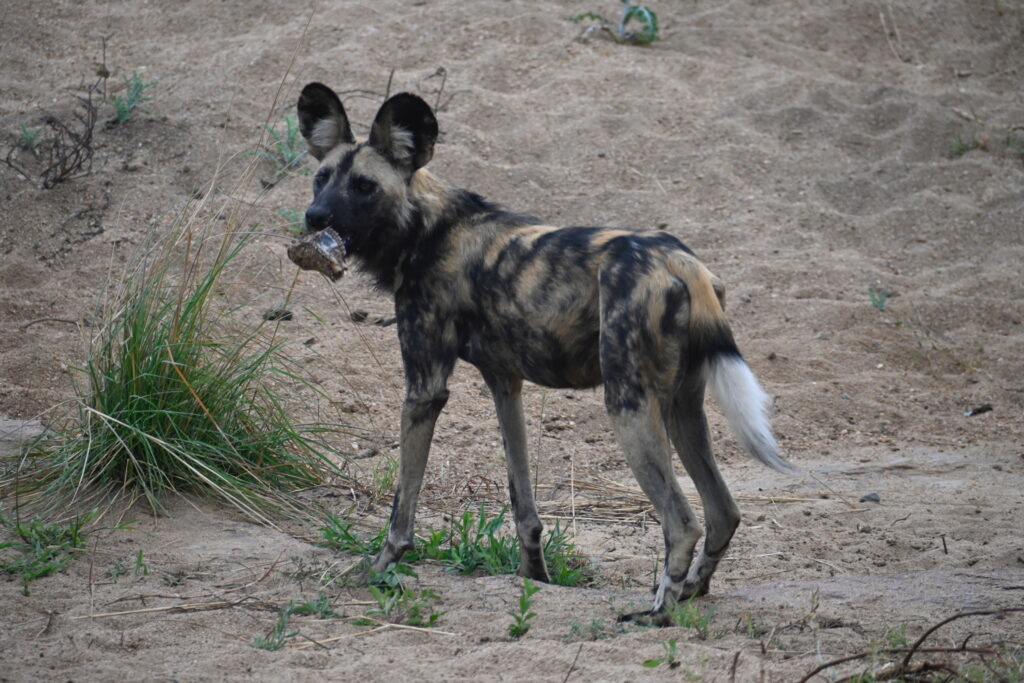
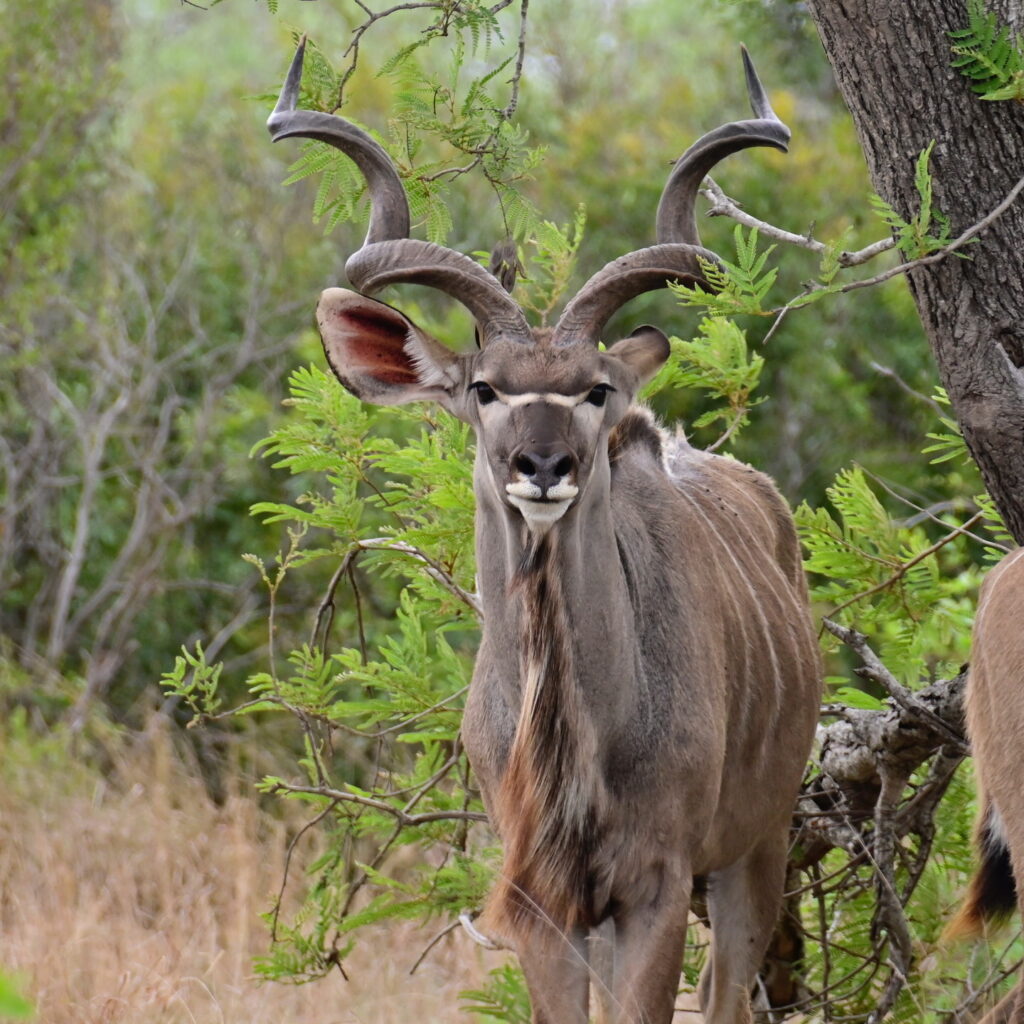
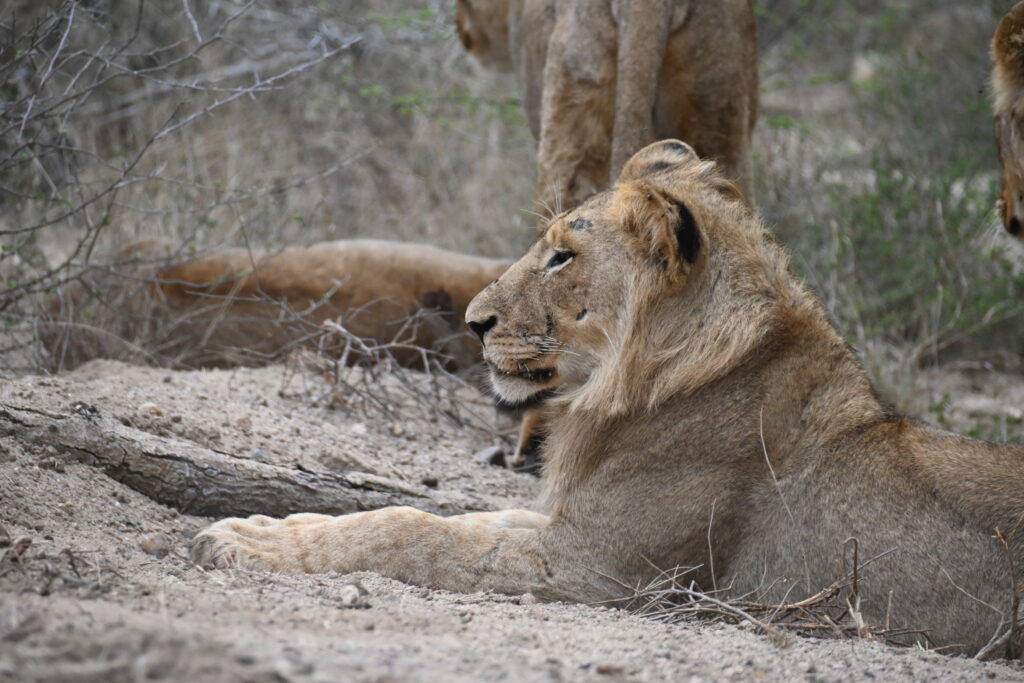
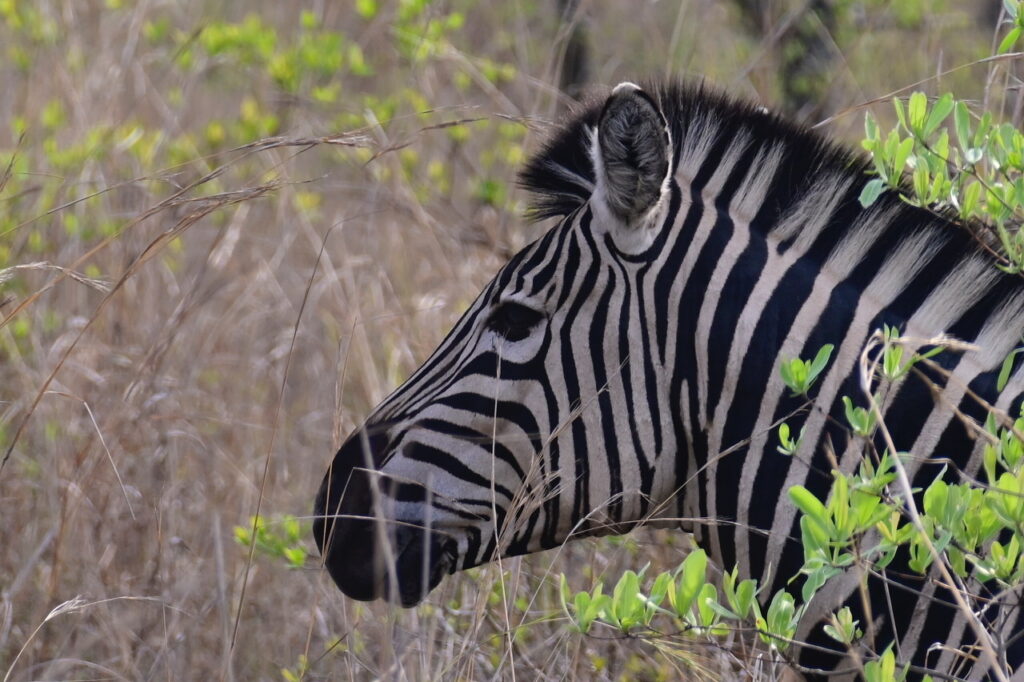
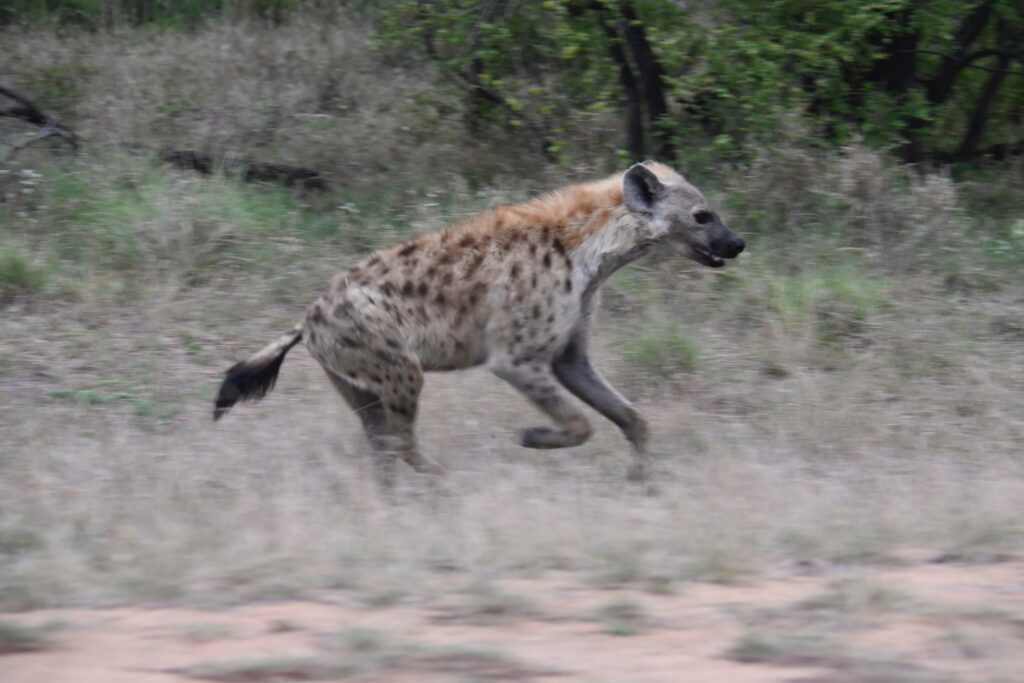
I had the opportunity to go on a safari drive in Kruger National Park which has always been a dream of mine. I remember watching the nature shows as a child of lions in Africa hunting zebra and springbok. I love all those David Attenborough narrated shows about the wilds of Africa.
I always liked the big cats and enjoyed watching them hunt. I found myself pulling for the lion or cheetah to win in its chase of the gazelle or battle with the wildebeest. I wonder why that is. Why did I side with the predator? Was I training myself early on to be the predator and not the prey? Did I subconsciously identify myself with the top of the social food chain? I’m not sure, but I pulled for the lions. I more closely identified with the narrative of the predator.
So I was hoping to see a big cat take down an animal on my safari drive. Now, I knew this was unlikely for several reasons. A big cat probably won’t hunt with us watching and we probably won’t be out on safari during prime hunting times, but I still hoped.
It’s interesting to see a big cat stalk and take down prey. The blood and gore wouldn’t bother me. The death wouldn’t either. I’ve been around death. I even hunt. But I discovered there is something that would bother me.
As I went on safari I saw animals living their lives. I saw family units of animals and followed them around. Sometimes you almost get a sense of knowing them if you watch them enough. If I came back the next day and saw that same family of zebras and suddenly saw a lion stalking the youngest, I wouldn’t want that lion to get a meal. It’d be hard not to shout out a warning.
Why? I admit wanting to see a lion kill a zebra, so why not this zebra. It’s because I know this zebra now. We’ve met. It’s not a faceless zebra or gazelle. I’ve experienced it.
I’ve found the same to be true when watching nature shows. When the narrative is told from a zebra or wildebeest’s perspective I don’t want it to lose a member of its family. When to documentary is told from the lion’s perspective I don’t want it to go hungry.
So much of our opinions and desires are based on the narratives we hear and the perspectives through which we encounter the world. Too often, we limit ourselves to very narrow narratives and perspectives: ones that are comfortable and familiar to us.
As part of my larger sabbatical process I participated in a six-month learning journey with reconciliation communities in the US and across the UK. As part of that, I learned more about counter narratives.
Counter-narrative refers to the narratives that arise from the vantage point of those who have been historically marginalized. The idea of “counter-“ itself implies a space of resistance against traditional domination. A counter-narrative goes beyond the notion that those in relative positions of power can just tell the stories of those in the margins. Instead, these must come from the margins, from the perspectives and voices of those individuals. A counter-narrative thus goes beyond the telling of stories that take place in the margins. The effect of a counter-narrative is to empower and give agency to those communities. By choosing their own words and telling their own stories, members of marginalized communities provide alternative points of view, helping to create complex narratives truly presenting their realities.
I’ve been more intentional about opening myself up to counter narratives by reading diverse authors and listening to communities different from my own. One of my goals with Engage Stories at Derry is to eventually bring in storytellers who can share counter narratives with us from their own experiences so we can create a space to hear them.
I want to be more intentional about hearing a variety of narratives about the world and the things happening around me. I want to make a space for the counter narratives. I want to really question if I’m only considering one dominant perspective when thinking about a situation, conflict, or problem.
I think this is extremely important for any reconciling community. If we aren’t making space for the counter narratives and we aren’t listening to diverse perspectives then we can’t really do the work of reconciliation.
I can still appreciate and love big cats. I can still want them to hunt and kill and eat. But at the same time I can appreciate the beauty and majesty of the zebra and antelope and hope they find ways to survive and thrive. I know both can’t always happen, and I know my experience may color how I feel in any specific situation. But I think it’s important to understand both animals and their perspectives and struggles as I consider the larger picture of life in the wild.
The same is true for life in Hershey. Life will not be perfect. Someone will get a job and someone won’t. Someone will win and someone will lose. But I hope I can do a better job listening and making space for the variety of perspectives and experiences that exist here so perhaps we can find better ways to live together and with God.
READ MORE SABBATICAL NOTES:
Cape Town #1: Kirstenbosch National Botanical Garden
Posted in Uncategorized on by Susan George. Edit
Sabbatical Notes from Pastor Stephen: Langa Township
October 9, 2022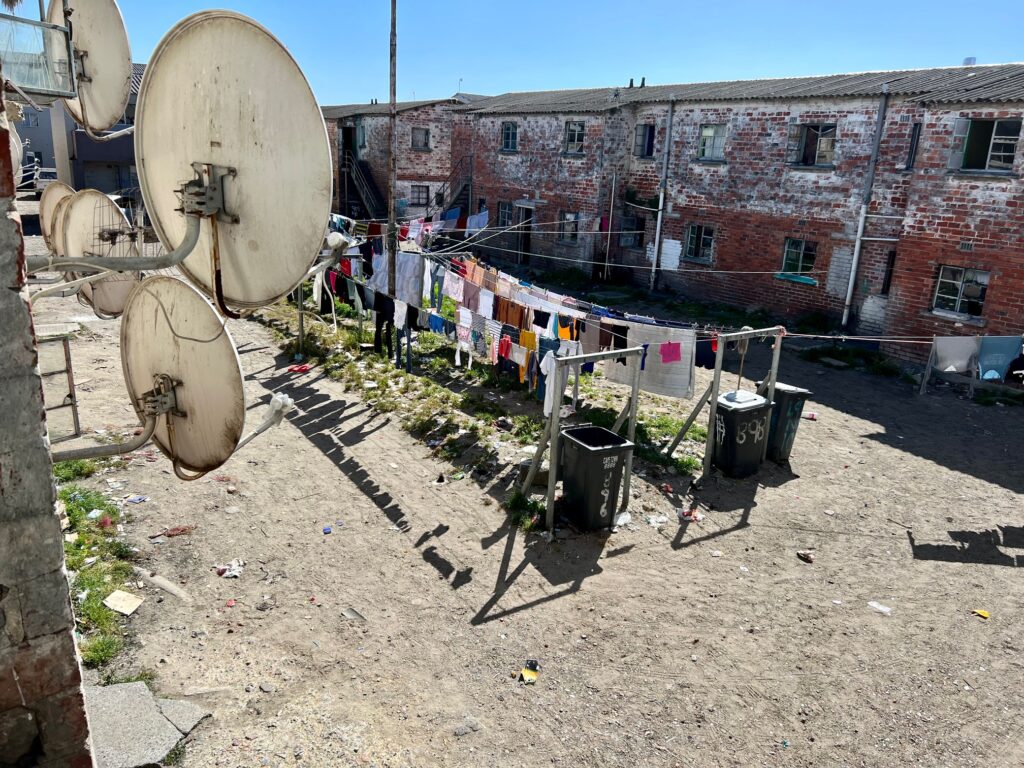
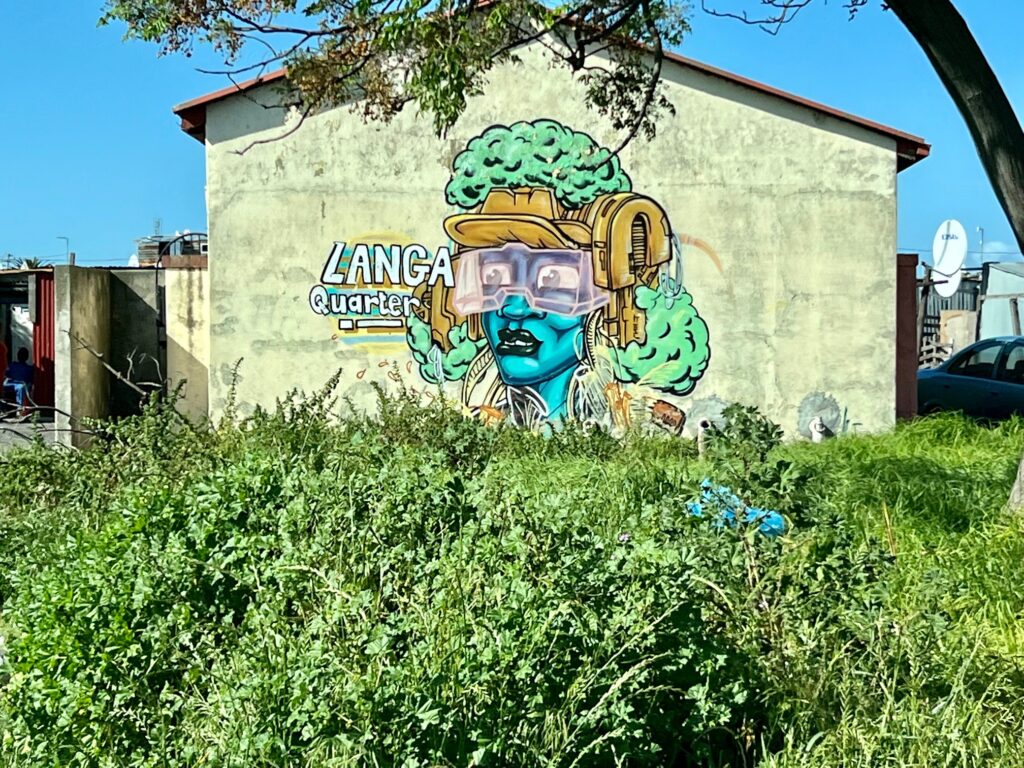
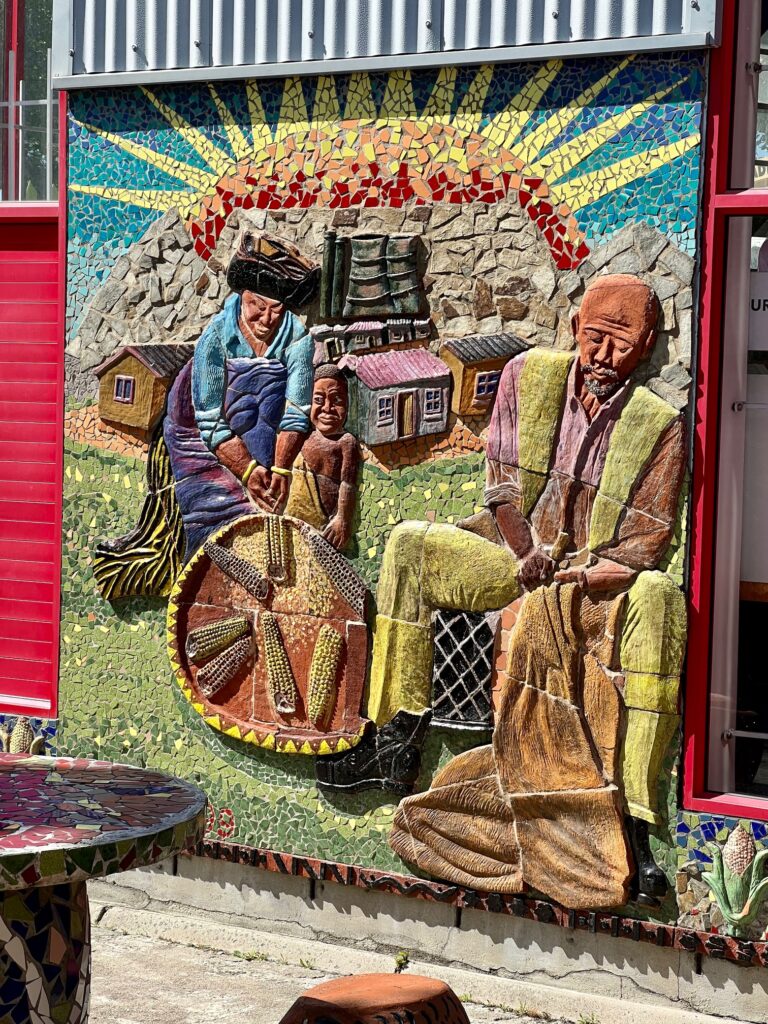
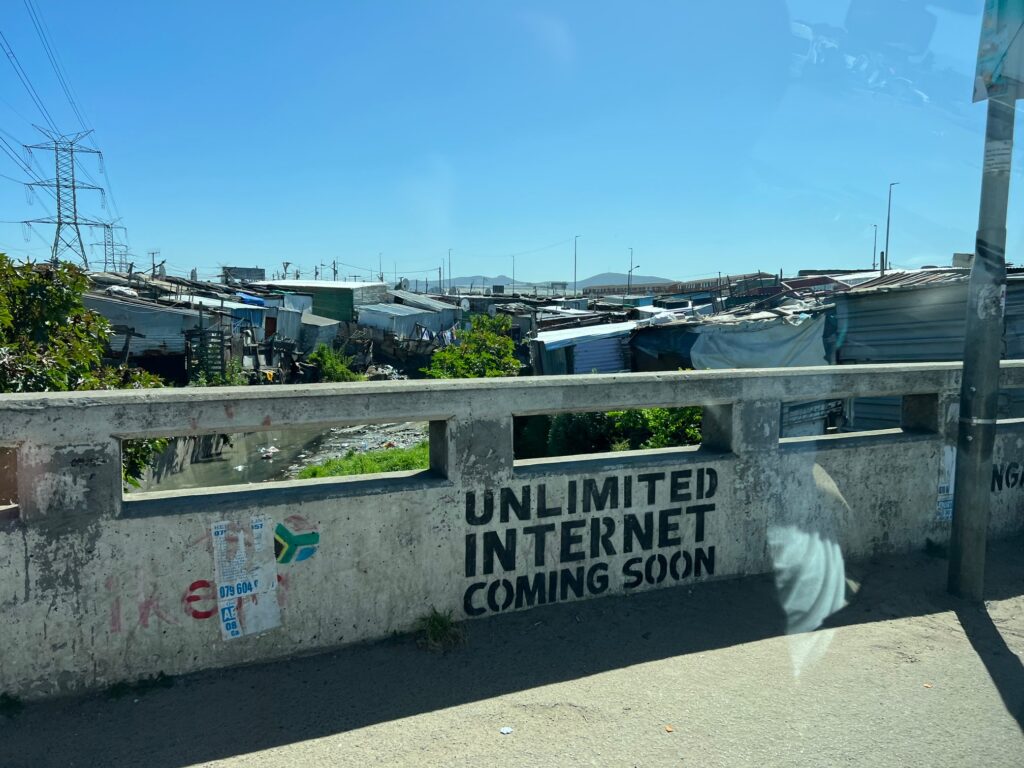
I visited Langa township in Cape Town with a local resident who showed me around, introduced me to people, and told me stories. I entered into small rooms that served as a home for a whole family, saw the businesses run out of small shipping containers, and the old courthouse pass office that regulated the movements of the residents.
I’ve heard about the townships in South Africa since high school when I read Cry, the Beloved Country, but I haven’t taken the time to really understand them or why such disparity exists in different parts of the same city. But it’s a reality in every city from Cape Town to Chicago.
I admit feeling a little odd touring a township. It feels a bit like poverty tourism, which is uncomfortable. I felt a little better being with a resident and learning from him, but there’s still a voyeuristic feeling to it. I wanted to learn and be more aware of Langa’s history and present. I wanted to see them and not just skip over these important areas of Cape Town in favor of the typical tourist locations. At times it was upsetting to see how some people had to live, and yet there was joy in the community. I saw little boys playing with cars they made out of milk cartons and caps. I saw women preparing sheep heads to sell for meat, and women braiding each other’s hair in small communal spaces. My guide, Ludumo, told me how everything was really communal there. People share cooking spaces, bath houses, lines for drying clothes and everything else. They work together and rely on each other because they need to. There’s no other way. The reality is that is the truth for us all but we choose not to live into it.
A township is an informal settlement and a type of racially divided suburb within South Africa’s big cities, such as Cape Town, Johannesburg, Durban, Port Elizabeth and Pretoria. I’ll be visiting Soweto township in Johannesburg later in the trip.
During apartheid and following the signing of the Group Areas Act of 1950, non-whites were forcibly removed from the center of Cape Town (everything around Table Mountain). They were moved to specific residential areas which had each been assigned to different ethnic groups.
However, Pass Laws forced men to leave their families at home and to go back to the cities to work. This led to men living in hostels in townships on the outskirts, and working in places such as factories, mines and other similar manual industries. They were homed in large dormitories with shared living facilities. I saw some of these hostels: concrete rows of rooms probably smaller than many of our bathrooms. When the Pass Laws were repealed, the wives and children were permitted to join the men, creating very cramped living conditions. This led to shacks popping up where suddenly the dormitories could no longer house the sheer number of people. As more and more people arrived, it quickly evolved into a township.
Langa is considered one of the safest of the Cape Town townships. As we walked the streets Ludumo seemed to know everyone. I was invited into homes and greeted by the residents. Langa is also one of the most manageable to visit in terms of size (just 1.5km square) whereas two of the other main townships, Gugulethu and Khayelitsha, are huge and take a lot longer to explore. The name ‘Langa’ derives from the name Langalibalele, a famous chief who was kept in prison on Robben Island for protesting against the government. There’s a street named after him within the township.
Around 70,000 people live peacefully in the township, most of whom belong to the Xhosa tribe. It was really interesting to hear some of them speak their click language. I tried it and it’s really hard. There are other African nationalities living there too, such as Somalians, Zimbabweans, Nigerians and Congolese. There are different clans there as well who have their own cultures and dress codes but who also speak Xhosa.
Langa township was established in 1923, making it the oldest in Cape Town. As mentioned, originally it was just men living here in dormitory style hostels and with black policeman patrolling. The men came from all over the country, but would tend to go home during Christmas and Easter for several weeks at a time. This led to many babies being born in September.
From Langa, the men traveled into Cape Town by train for their manual labor jobs in the city. When the women and children arrived to Langa in the late 1950s, whilst it led to cramped conditions and poorer sanitation, it did lead to health clinics and schools being built, which also led to more jobs within the township.
I am really thankful I went because some of my preconceived notions were shattered and I left inspired and full of hope. I think that’s what happens when we engage with people and places of difference. That’s why I love to travel. I put flesh and bone on ideas and stories I’ve only considered from a distance.
My guide showed me that there are several socioeconomic classes even within a township – not everyone lives in a shack (which is sometimes the picture we have in our heads of townships like Langa and Soweto). In fact, there was a middle class, and an upper class – an area he joked was the Beverly Hills super rich area. But he wasn’t far wrong: the houses in the township here were far larger and people drove fancy cars. It was a microcosm of any city all within the township.
The lower classes still live in shacks and shared spaces. The rent for these is free, as well as water. The only thing they have to pay for is electricity.
The lower middle class live in small brick and mortar homes, but due to overpopulation in the township, many share the space with other families. Many of this class live in government-built homes, most of which were constructed en mass in 1994 following the end of apartheid. People queued up for these homes, and the wait was (and still can be) as long as 10 years for one of these houses. Those who live in these do pay the government some rent.
The middle class live in small homes, with fewer families sharing the spaces. Again, the residents of these types of hoard pay rent to the government. They, along with the other lower economic classes, typically have to prepay for electricity and water.
The upper class live in bigger houses and are employed in professional roles such as accounting or in medical jobs, but choose to stay in Langa to give back and support the community which supported them.
Ludumo also took me to a community center that was built to help youth learn crafting and art skills. The youth designed the beautiful mosaics that adorn the building and they have workshop spaces there. They are also able to sell what they make. I was able to purchase a necklace for Verity and meet the creator. I bought a beautiful sand painting of an African Wild Dog (which I hope to see on this trip) by a young man who is extremely talented. I saw beautiful mugs and other pottery, too, but space in my suitcase is getting tight. There is joy, and beauty, and entrepreneurship, and creativity are alive and well in Langa.
I think visiting a township, or any place that is off the normal tourist map, can be beneficial if done right. Let the residents speak for themselves and have a local show you around. It is an opportunity to learn and experience and broaden your understanding of the diverse ways in which people live, survive, and thrive.
The only path to true reconciliation is with and through one another. That means seeing, hearing, and engaging with those on the margins and those we may not normally commune without or even think about. It means visiting places like Langa and learning from them and investing in their future, because ultimately it’s an investment in all our futures.
READ MORE SABBATICAL NOTES:
Sabbatical Notes from Pastor Stephen: Johannesburg and Soweto
October 8, 2022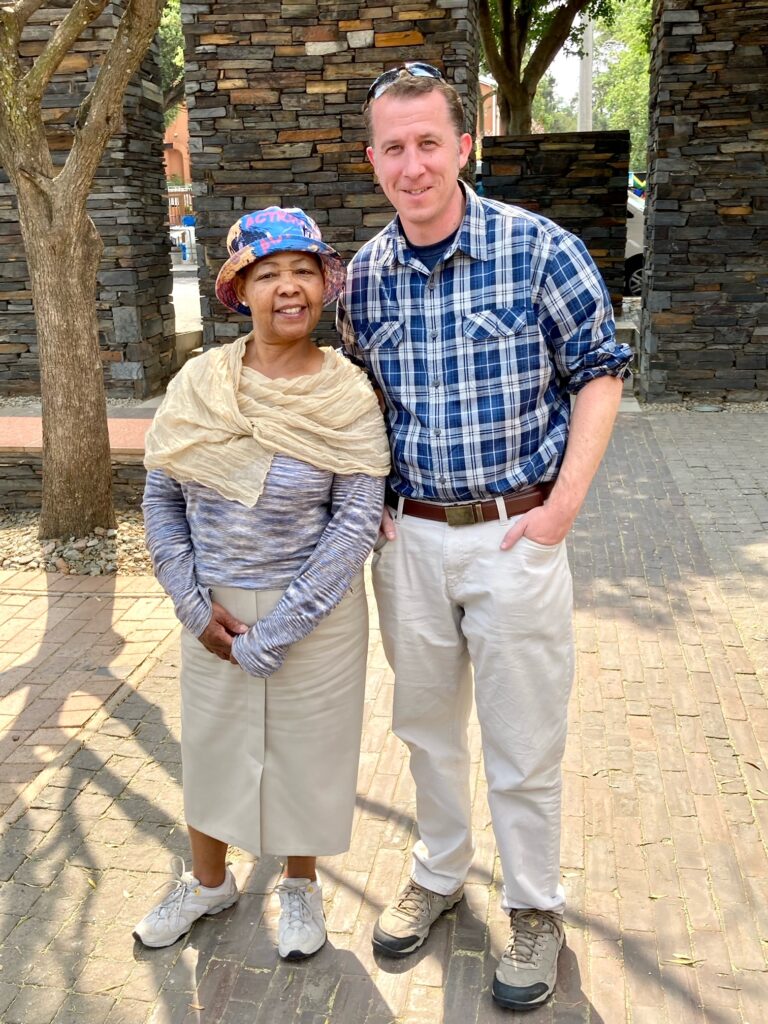
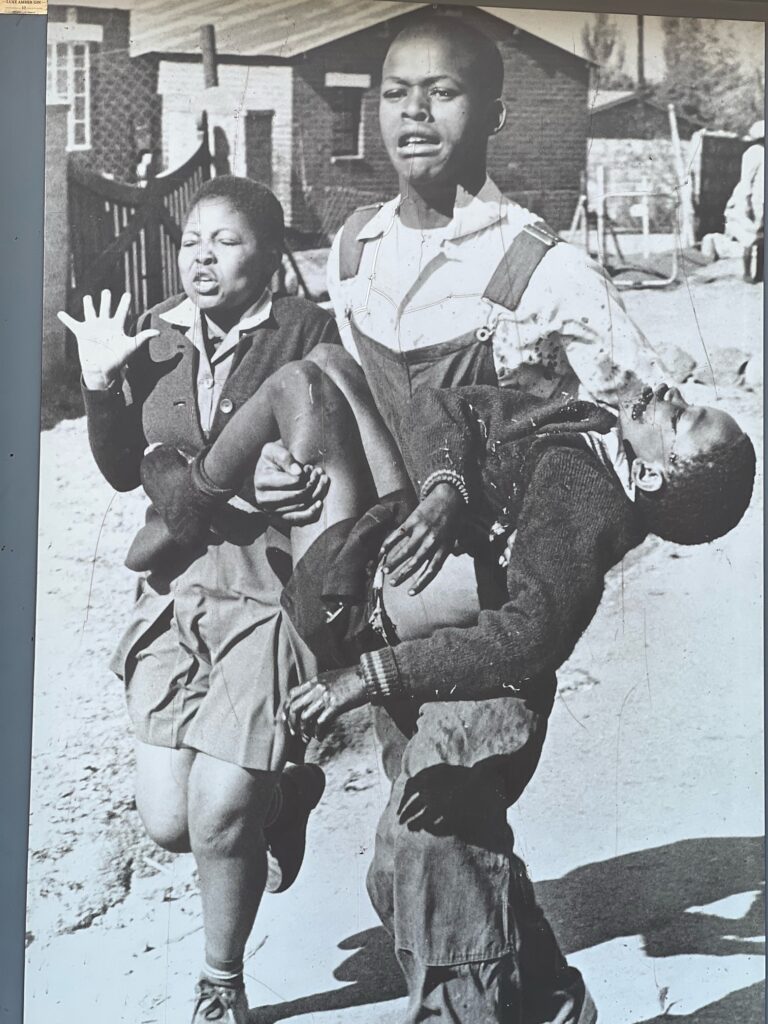
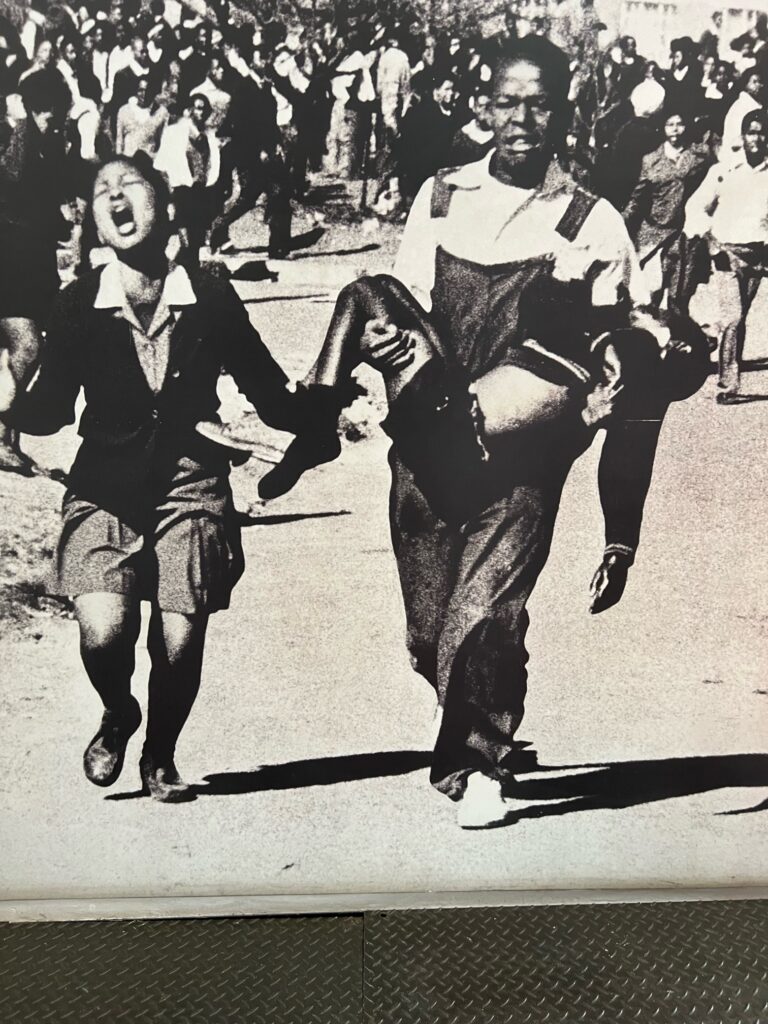
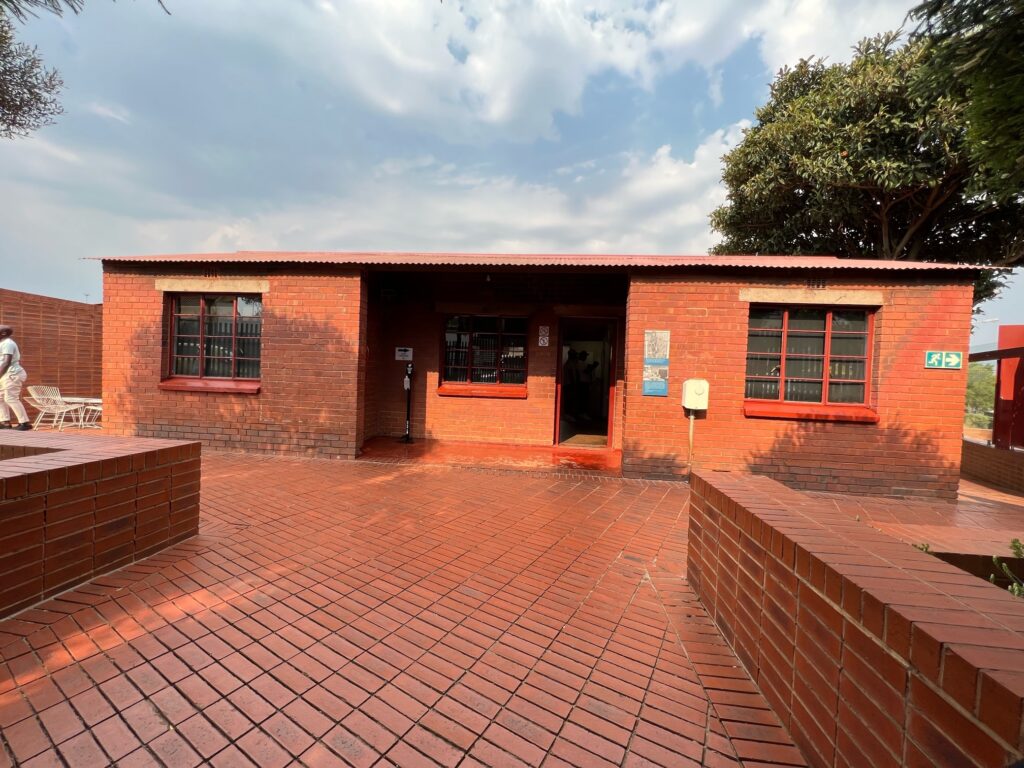
Today, in Johannesburg I visited Soweto township and the Hector Pieterson Museum.
The museum is named for the young boy who was shot and killed by police on June 16, 1976, during the student marches protesting the mandatory use of the Afrikaans language in their schools to the exclusion of their native languages.
I was able to hear a first-hand account of the events of that day by Mama Antoinette, Hector’s older sister who was participating in the march.
On the morning of Wednesday, 16 June, 20,000 students in Soweto assembled in school grounds before beginning their march to Orlando Stadium where a protest against Afrikaans was to be held. On the way, not far from Phefeni Junior Secondary School on Vilikazi Street, 12-year-old Hector Pieterson joined the group which included his older sister Antoinette.
After a brief standoff with police, a shot was fired. Mama Antoinette recalled everyone running. And hiding. She showed us the place she hid and where she saw her brother standing out in the open. She called to him and he made his way to her, but there were more shots and confusion and they were separated. She said that spot is special to her because it was the last place she ever saw her brother alive. There were more shots and Antoinette saw a young man running up the street. She didn’t know what he was doing but then she saw the body he was carrying and recognized the shoes. She followed, crying, asking what he was doing with her brother. They finally arrived at a clinic where a doctor said Hector was dead.
There are famous photographs of that day showing a dying Hector Pieterson, cradled in the arms of a fellow student, with his terrified sister running beside them. These images, taken by news photographer Sam Nzima, became a symbol of the resistance against apartheid. Today, June 16 is commemorated as Youth Day in South Africa.
I asked Mama Antoinette what reconciliation means to her. She said she felt 50/50 pain and hope. She echoed some of what Kgotso told me yesterday. She said only about 15% of white Africans seemed to have any interest in reconciliation but wanted black Africans to just move on and forget the past. She emphasized reconciliation takes two parties, and you can only do your own part.
She was able to take part in the Truth and Reconciliation in 1996 and share her story. At first, she didn’t want to, but realized she needed to in order to free herself of the burden and pain she’d been holding onto for so long. She shared her story and the commission asked if she wanted to know who killed her brother. She had to really think about that but eventually decided no, but she told the commission she forgave everyone. She said she needed to. It wasn’t just for them, but for her, too. She needed release from that moment as the definitive moment of her life. She needed to cut the chains that tied her to that tragedy and the men who shot her brother so she could be truly free. She had to forgive to find peace and finally live a new life. She told me, “we must let the dead rest in peace, but the living must live in peace rather than in pieces.”
She was in pieces until she was able to share her story with the commission and forgive others. There was no other way to wholeness and newness. While reconciliation takes two, forgiveness only takes one. She echoes Tutu’s famous phrase, “There is no future without forgiveness” because she has lived it.
After the museum we walked with Mama Antoinette through Soweto to the house where former South African President Nelson Mandela lived, on and off, for more than 14 years. The house has now become a museum that tells the tale, in sound, film, interpretive panels and guided tours, of the Mandela family during the apartheid era and beyond.
In his landmark autobiography, The Long Walk to Freedom, Mandela describes coming back to his house in Soweto in 1990 upon his release after 27 years in prison: ‘That night I returned with Winnie [his then-wife] to No. 8115 in Orlando West. It was only then that I knew in my heart I had left prison. For me No. 8115 was the centre point of my world, the place marked with an X in my mental geography.’
Vilakazi Street, where the Mandelas lived, is the only street in the world to have housed 2 Nobel laureates − the other being Archbishop Emeritus Desmond Tutu.
In 1961, Nelson Mandela left No. 8115 for life on the run as a political activist. He was arrested and imprisoned in 1962. I wrote about that after my visit to one of his prisons, Robben Island.
His second wife, Winnie, who he married in 1958, was subjected to harassment, torture and imprisonment while living there on her own with the children.
I can only imagine the terror and struggle and anger that would often fill the house as her daughters had to watch their mother be dragged away by Apartheid police again and agin. This was routinely undertaken from 1962 until 1986, when Winnie returned from exile in Brandfort to continue life with her children. On 28 July 1988, Winnie and Nelson’s house was burnt to the ground by a fire after a conflict between the Mandela United Football Club which Winnie led, and pupils from Daliwonga High School. The community came together to help rebuild the Mandela’s house.
11 years later, on 16 March 1999, the house was awarded the status of a public heritage site, with Nelson Mandela as the Founder Trustee.
I learned a lot about the Mandelas’ lives and struggles at the house. His life was full of difficult circumstances and near impossible choices. What I’ve discovered through these different journeys and experiences is that I can’t judge people for what they do in contexts and situations so vastly different than my own. I can’t judge what an oppressed Irish Republican decides to do as they see they community destroyed by paramilitary groups any more than I can judge Mandela for some of the choices he made in his struggle for freedom for his people, or what people did in our own country from freedom from Britain or their supposed masters. We never know how we’d respond in similar circumstances unless we find ourselves in them. I pray we never do.
So we cannot and should not judge, but be willing to learn from them and their mistakes and successes and failures along the long roads to freedom.
There’s a lot of information out there about Mandela in the form of movies and biographies so I don’t want to rehash a lot of what you can easily find on your own, but here a few highlights that stuck out to me;
Mandela was expelled for joining a student protest while studying at Fort Hare. After a short stint as a security guard at a mine, he spent some time as a legal clerk in the law firm Witkin, Edelman and Sidelsky. His passion and natural aptitude for law was seen through his studies both in and out of prison, and the establishment of South Africa’s first Black law firm, Mandela and Tambo, with Oliver Tambo in August 1952.
His involvement in politics became more pronounced from 1944 when he helped to start the ANC (African National Congress) Youth League. The following years saw harsh punishment from the state against Mandela and his fellow political activists.
Some of the most notable movements in his activist career were leading the ANC’s armed wing Umkhonto weSizwe, facing sabotage charges at the Rivonia Trial, and being sentenced to prison and banned from political activity multiple times. These moments led to a life imprisonment sentence in 1964. He was freed from prison in 1990 amid growing domestic and international pressure and fears of racial civil war by President F. W. de Klerk. Mandela was then elected President in 1994.
While there are a lot of opportunities to learn about Nelson, there aren’t as many to learn about his wife Winnie. Winnie was just as intelligent and driven as Nelson, finishing the top of her class for her social work degree in 1955. She chose a medical social worker job opportunity in Johannesburg over a scholarship in the USA. Nelson and Winnie were both charismatic and had a passion for equality and justice for their country and the world.
It must have been extremely difficult for Winnie in those early years (but also while Nelson was in prison). She walked into a life characterized by intense underground campaigning, which frequently meant she and Nelson couldn’t be together. The police raids in the dead of night became a constant feature in the family’s life. The police would raid the home and ransack the place. A few months after finding out about her first pregnancy, Winnie and other women embarked on mass action to protest the Apartheid government’s Pass Laws. She was arrested along with 1000 other women. She was appalled by the inhumane prison conditions. This intensified her resolve to keep fighting for justice and in the subsequent years she was continually harassed and imprisoned.
In 2016, the South African government recognized Winnie for her contributions to the liberation struggle with the award of the Silver Order of Luthuli. After a long illness, she passed on at the age of 81 on April 2, 2018.
While the Mandelas were active in the struggle for justice, they were also leading voices for reconciliation. Reconciliation can’t happen without justice and mercy. Mandela knew there was a divide in his country, a legal divide between races that became economic and philosophical and educational. Life was not good for the oppressed majority and anger was building. He knew there would need to be peace and reconciliation with the minority white Africa in power, but that couldn’t happen before justice was done. He worked for equality and for power-sharing and when that was accomplished he didn’t use his new power to hurt but to help hear the old wounds of his country.
We, too, need to reconcile over many things in our nation, but first we have to ask, has justice been done? Is there more work to do in order to make reconciliation possible? To ask for reconciliation without justice is to ask someone to say all the wrongs done to them are okay and can continue.
This doesn’t mean that justice has to be perfectly done. That’s never the case. No one will ever agree on when justice is complete or done the right way. But if there is no progress, it’s insulting and demeaning to expect reconciliation. It’d be like an abused woman being asked to reconcile with her husband while continuing to be abused and knowing it will continue to happen in the future. We would never suggest that (at least I hope not). The same is true for societies where there has been injustice.
READ MORE SABBATICAL NOTES:
Sabbatical Notes from Pastor Stephen: Cape Town #2
October 7, 2022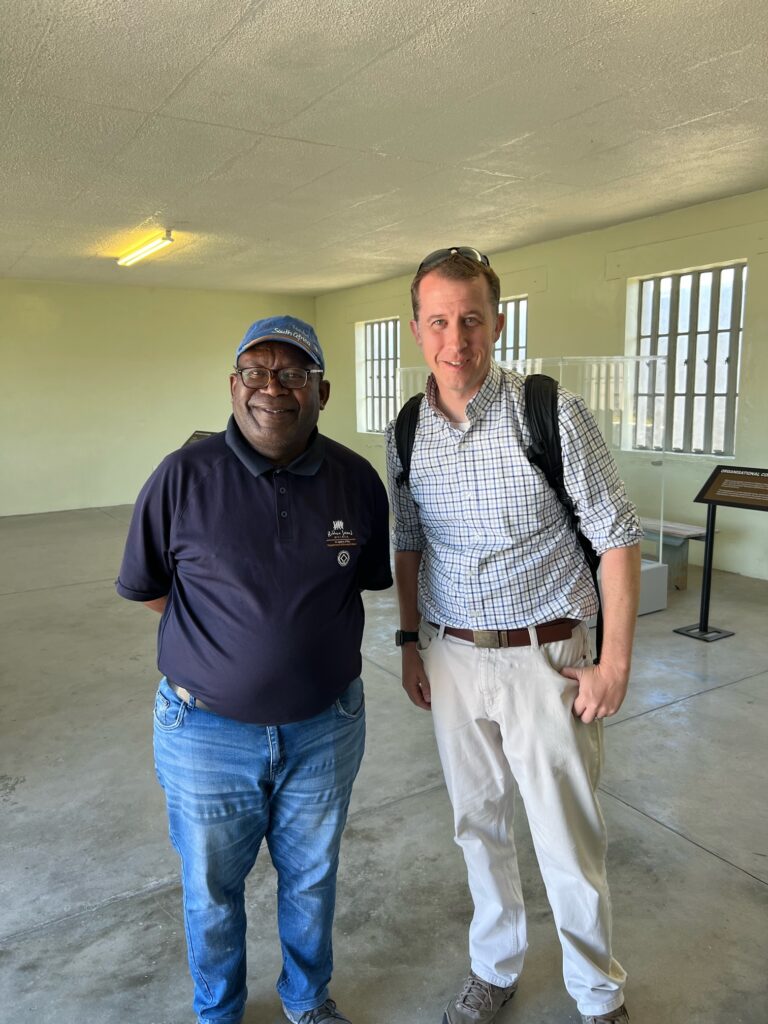
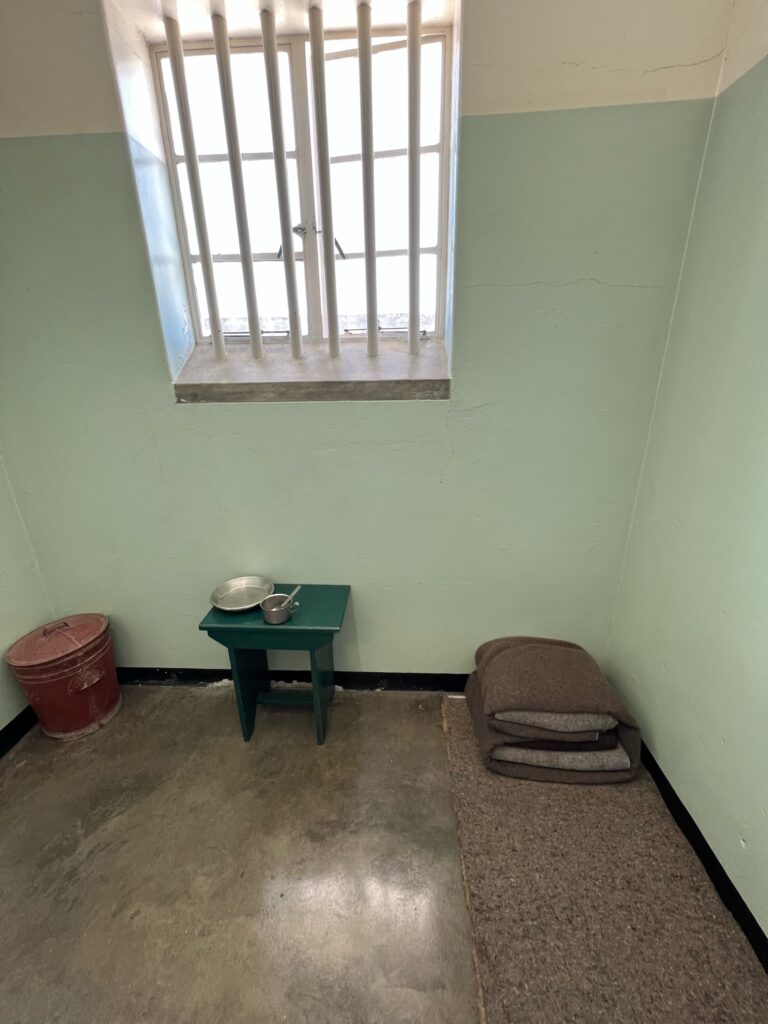
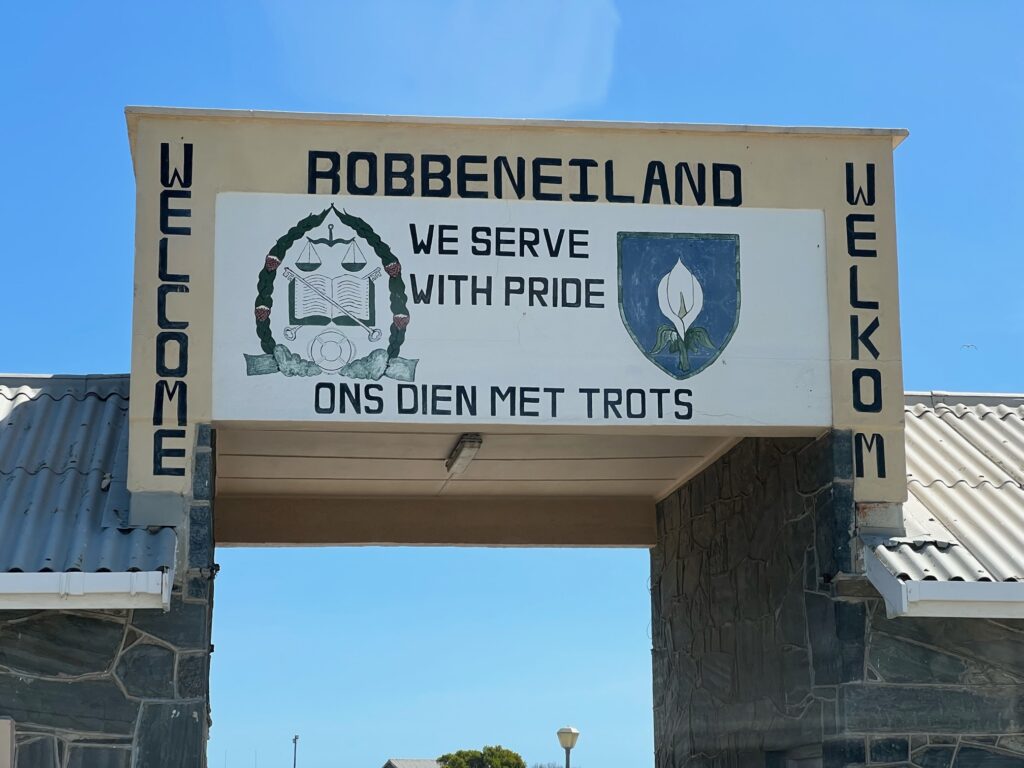
Today I had the profound experience of visiting Robben Island and was guided around the island and prison by a former political prisoner named Kgotso. If you’re wondering why it is named Robben Island, the word ‘Robben’ is the Dutch word for seal, named after a large colony of seals that once populated the land.
Robben Island is acknowledged for its great political symbolism as a place of selfless struggle and as a place signifying the triumph of the human spirit over great adversity. The Island is a space of memory with a rich and layered history going back 10,000 years. It’s actually the top of an undersea mountain! Its recorded memory and history of interaction with the outside world is said to have begun with the arrival of Vasco da Gama in 1498.
Robben Island has a chequered history of maritime contacts, confinement and banishment, oppression and hard labour, torture, segregation and discrimination. It has also been a military post, World War Two garrison, leprosarium and mental health facility, a prison for common law criminals and for political prisoners. Very few places in the world have such a long and layered history of human suffering, the fight for freedom of the mind and the body, and of subsequent triumph.
Robben Island is most famous for being a maximum-security prison for anti-apartheid political leaders from 1961 to 1991. After the political prison was shut down, the island became a museum for visitors and tourists to pay homage to the resilient leaders who fought for South Africa’s democratic society.
The prison was notorious for its harsh conditions and cruel treatment of prisoners. The prisoners had to comply with Robben Island maximum security structures and were forced to do tasks such as breaking rocks into gravel under harsh weather conditions. Prisoners were kept in solitary confinement which was primarily used as a means of punishment and torture.
While working in the limestone quarry was arduous, many prisoners saw it as a blessing. Mandela said the quarry would become their university. Since so many prisoners were lawyers, professors, and doctors, they could teach the other prisoners while working alongside them. Many prisoners preferred the work with one another over being alone in their cell.
Robben Island is famous for the many anti-apartheid freedom fighters incarcerated there. Members of the ANC, PAC and other organisations including the SA Congress of Trade Unions, National Liberation Front and the Communist Party were imprisoned on Robben Island for their anti-apartheid activism.
One prisoner, Robert Sobukwe, eventually became a detainee rather than a prisoner and was kept in a house on the island. The government didn’t want him to go free so added a clause to a law just for him to keep him detained. It was called the Sobukwe clause. He was a leader of the PAC.
In 1964, famous anti-struggle figures, Nelson Mandela, Walter Sisulu, Govan Mbeki and other ANC leaders were sent to imprisonment on the island. Mandela spent 18 of his 27 years of incarceration there before being elected as the country’s first democratic president. After decades of grueling incarceration, finally, in 1991, following the unbanning of political organizations in 1990, all political prisoners were granted freedom and were released from Robben Island.
I had some time in Mandela’s small cell. It’s fixed up from what it originally looked like. My guide showed me another cell that was more authentic looking with chipped paint. Originally there were no glass windows, just bars, on the one window looking into the courtyard so all the elements came into the cell.
What amazes me is the power of hope in those incarcerated there. It is mind boggling that these political prisoners could endure years of harsh conditions and torture to still be strong enough in mind, body, and spirit to help usher South Africa into a new democracy and to do so largely peacefully.
If anyone had reason to seek vengeance and retribution it would be people like Mandela, but he chose the path of reconciliation. He chose mercy. He did not bury the truth but let mercy coexist with the truth. It couldn’t have been easy, but his hope for a better and more equitable South Africa gives me hope for a better and more equitable US and world.
The transition wasn’t perfect and there are still plenty of political problems in South Africa, as there is everywhere, but when things could have devolved into civil war and violence Mandela helped the nation choose a better path. He, along with leaders like Desmond Tutu helped many in the nation learn and choose to forgive. But reconciliation isn’t just forgiveness.
Kgotso was sent to the prison in 1984 and sentenced to 25 years. He was in the last group of 50 prisoners released in April of 1991. He said he never wanted to return to the island. Every thought or memory of his time caused pain and trauma. He had nightmares and was turning into someone he didn’t want to be.
In 1996 there was a reunion of all the political prisoners imprisoned on Robben Island that Kgotso attended. It was difficult but he realized he had needed to return. A few years later he began guiding tours of the prison on the island and sharing his story. What started as painful began to be healing. He said people need to remember and know the history. It can’t just be buried because it might make some uncomfortable or feel guilty. It would pain him and make him feel worthless and meaningless if Robben Island was swept under the rug, no longer taught in schools, or visited.
I asked him what thoughts or emotions the word reconciliation brings up for him. He said “pain.” It pains him that he and people like him are the ones expected to do the work of reconciliation and make all the concessions when the ones who perpetrated the injustices show few, if any, signs of remorse. They just want to move on and forget and demand the same from those whose lives were forever changed and damaged because of their selfishness and unjust laws. I asked if it seems the other side wants him to provide peace and mercy without them having to provide any justice or recognition of the truth. He said, “exactly.”
I asked if he had ever received an apology from anyone for what happened to him. He said one guard spoke to him in 1996 and said he was sorry. Kgotso felt he was sincere and forgave him. That conversation was meaningful to him, but it was only one guard out of many guards and politicians and others who had put him and kept him in prison.
We all have much to forgive and be forgiven for. If we could confront those things with courage, and with courage ask for forgiveness and grant it, perhaps we, too, could find ourselves on a path of reconciliation and healing in our communities and country. We don’t have to be prisoners of a painful and unjust path, though that is often chosen. We don’t forget it. We don’t say it was okay. We don’t pretend it didn’t happen. We acknowledge it, we rectify it, we learn from it, and we heal from it as we reconcile ourselves with that painful past and each other.
We still haven’t done that in the US from any number of historic and current traumas. We have not righted wrongs or even acknowledged some injustices. We won’t heal and move forward together until we do.
Read more Sabbatical Notes:
Sabbatical Notes from Pastor Stephen: Cape Town #1
October 6, 2022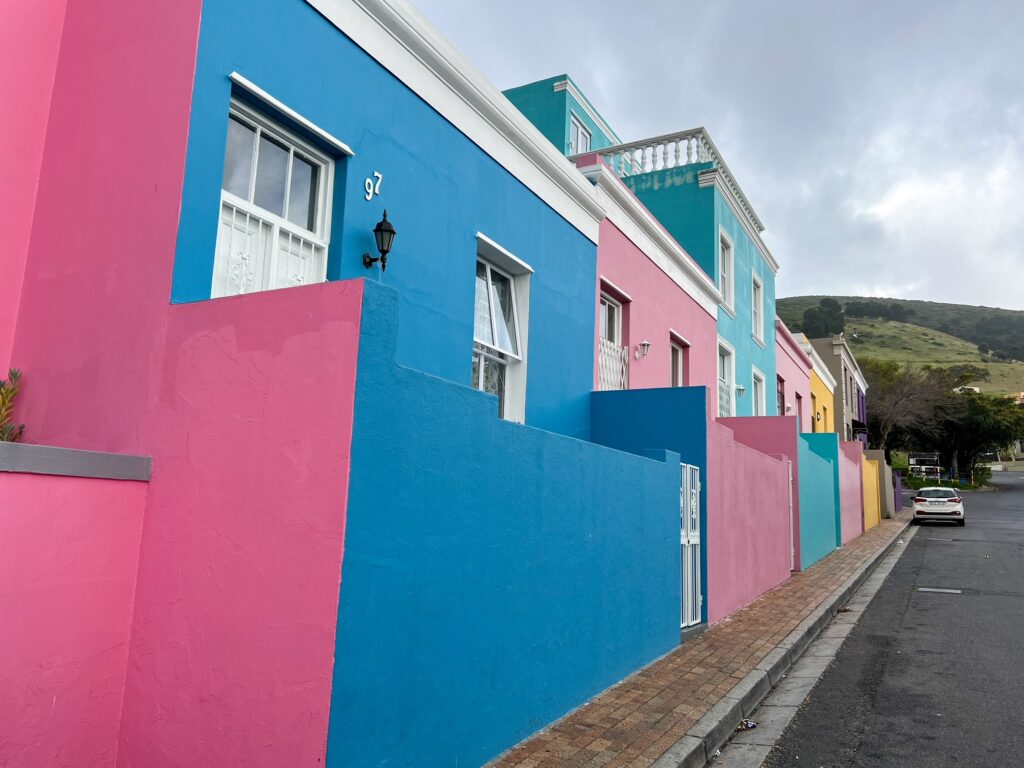
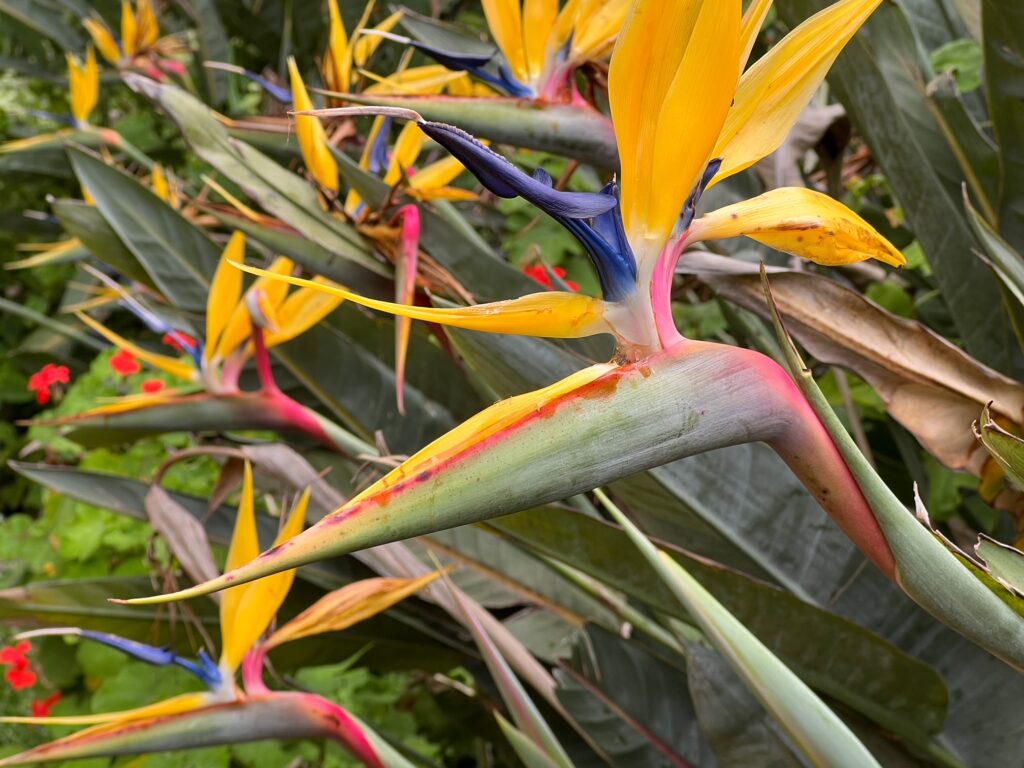
Today was my first full day in Cape Town, and I had the opportunity to visit the Kirstenbosch National Botanical Garden. What I found most interesting is that there are only plants and flowers native to South Africa in the garden. Every other botanic garden I have ever visited has flowers from all over the world. Sometimes those flowers and plants were appropriated from other places in the world. So at first I thought, “Wow, they are really trying to emphasize South Africa, so this garden must be a place of communal pride and unity.” But things are never so simple, especially in a country like South Africa that has a history of colonization, exploitation, injustice, and unfair power dynamics… not unlike Ireland and not unlike the US.
South Africa is a country whose identity will always be tied to colonialism and the exploitation that comes with that. The botanic garden cannot escape that heritage. Kirstenbosch was built in 1913 on land that had been shaped by centuries of Indigenous presence; violent conflict in the wake of European settlers’ occupation of the Cape in the mid-17th century; and colonial forestry and agriculture, both of which included the use of the labor of enslaved people. The botanical garden was established with the aim to contribute to the development of the newly established Union of South Africa by promoting science, the economy, conservation, education and a sense of belonging and citizenship among white South Africans. It evolved within imperial networks in the southern African region, which is reflected in Kirstenbosch’s collecting practices which, while claiming to exclusively represent the South African flora, included plants from areas under South Africa’s military influence in the southern African region.
In the discussions leading up to Kirstenbosch’s establishment in 1913, Harold Pearson, who was to become the institution’s first director, listed easy accessibility for ‘as large a number as possible of the civilized inhabitants of the country’ – meaning white South Africans – as a criterion for the selection of a site. Black people were imagined as its laborers but not as its visitors. Throughout the apartheid era, Black visitors were not formally excluded, however they were actively discriminated against; refusal to be served in the popular teahouse regularly led to bitter complaints.
Kirstenbosch has for a long time been culturally alienating, as it has throughout its existence centered Western knowledge systems. Plants were displayed as objects of science, ordered according to taxonomic and phytogeographic criteria, and equipped with labels featuring their Latin scientific names – despite focusing, together with the other South African National Botanical Gardens, on plants classified as indigenous to South Africa. Popular names in English or Afrikaans were included, but no connections were made to the African and Indigenous epistemologies and cosmologies to which the plants were attached.
In 2002 a new garden concept was created that highlighted how the indigenous people of South Africa identified and used the native plants. The Useful Plants Garden focuses on African and Indigenous uses of plants, including about 150 plant species, which are ordered according to categories of use. In the development process, izangoma/amagqirha and izinyanga (traditional healers) and Rastafari bossiesdokters (a prominent group of plant practitioners in the Western Cape) were consulted. The plants are accompanied by labels which, in addition to Latin taxonomy, also include names in English, Afrikaans and African languages as a standard.
Even this attempt at a decolonized garden that emphasized a traditional and indigenous approach to botany has had its issues and criticism.
Why does all this matter? I think it showed me once again that all parts of society are impacted by the past and its power struggles. Even something that seems simple and universal like a garden can reinforce power structures and stereotypes. It takes so much intentionality to deconstruct the injustices inherent in societal systems.
One reason I chose to go to Ireland and South Africa as part of my sabbatical was that it’s sometimes easier to study and identify those things when we aren’t a part of them. I thought it’d be easier to talk about these issues at a distance before talking about the issues at our doorstep.
The reality is that the issues of injustice and colonization, the nation’s heritage of slavery, and racism and class struggles still show up everywhere even if we don’t notice it. And what I’ve learned is that reconciliation can’t really happen until we start to notice and deconstruct some of these things instead of those in positions of privilege and power saying “It’s in the past get over it” or “It’s just a garden what do you have to make a problem out of everything.”
We have to be willing to listen to those who are telling us that the way things are still hurts and still isn’t fair and still prioritizes one way of living in the world. And on the flip side, when one side tries to make amends and do better, grace has to be offered when the first, second, or even third attempt isn’t perfect. And we have to be willing to work together to fix it and make it better not just for us, but for them, and everyone else.
I didn’t expect to learn so much about society and reconciliation from a garden, but that’s the beauty of travel. You learn in unexpected ways.
I also learned that they have a yellow bird of paradise flower found only in South Africa. Mandela visited in 1996 and they officially changed its name to the Mandela Gold.
I also visited the colorful Bo Kaap neighborhood. It started as an area for slaves to live and it was required that every house be white. Once slavery was ended the residents painted their houses all different colors in defiance. It has been a predominantly “colored” neighborhood. Colored is a term proudly used in South Africa for people who come from the indigenous people of the cape and Indian immigrants. Colored people have darker skin than white European but lighter than the black African people. When the ANC government took over (the black African government) they tried to raise taxes their to drive the colored people out. It eventually because a UNESCO heritage site so taxes couldn’t be levied. It just goes to show once again that those who have been oppressed for so long don’t suddenly govern justly and equally for others. Throughout history, governments too often have worked just for their own group to the exclusion and disadvantage of others even if they were once disadvantaged alongside those others. This is why justice is such an important part of the peace and reconciliation process. Giving new power to any one group doesn’t mean the process is over or that justice will now be done.
READ MORE SABBATICAL NOTES:
Jane Robertson • Derry Member
October 6, 2022Editor’s Note: On the first Thursday of each month, the eNews feature article highlights the mission focus for the month. In October we’re lifting up efforts to fight hunger in our community and around the world.
Did you know that last year 828 million people around the globe went to bed hungry?
Did you know that 13.5 million households in the United States were food insecure?
Did you know that right here in Central PA, 153,000 individuals visited the Central PA Food Bank every month?
Statistics like these can be overwhelming. It can seem like an impossible problem to solve. However, there are steps that can be taken that will help those who are hungry. Consider these mission opportunities:
- Serve breakfast or lunch at Downtown Daily Bread. Contact Craig Smith for details.
- Donate Giant or Walmart gift cards to the Hershey Food Bank and the Central PA Food Bank.
- Serve dinner to workers at the Racetrack. Derry is scheduled to provide dinner on Monday, Oct 31: contact Craig Smith to volunteer.
- Hold a food drive in your neighborhood to benefit the Hershey and Central PA food banks.
- Celebrate a birthday or anniversary by asking friends and family to donate to one of Derry’s missions that support feeding programs.
- Organize a team to walk in the CROP Hunger Walk at 2 pm on Sunday, Oct 23. Sign up online to walk or to make a donation, or stop by the table in the Narthex on Sunday morning.
- Find out what the Presbyterian Church (USA) is doing to combat hunger: check out the Presbyterian Hunger Program. Support their work by writing a check or giving online.
Each of us in small ways can make a real difference in fighting hunger. As the CROP Walk slogan so aptly puts it, Help End Hunger One Step at a Time.
Sabbatical Notes from Pastor Stephen: Istanbul #2
October 5, 2022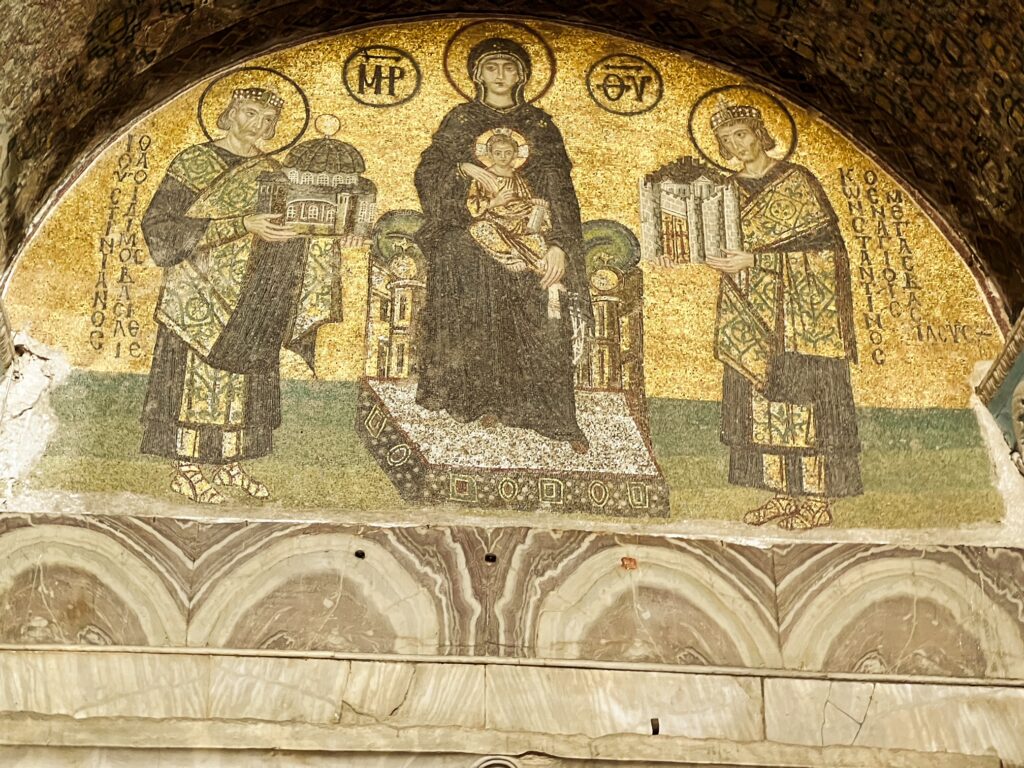

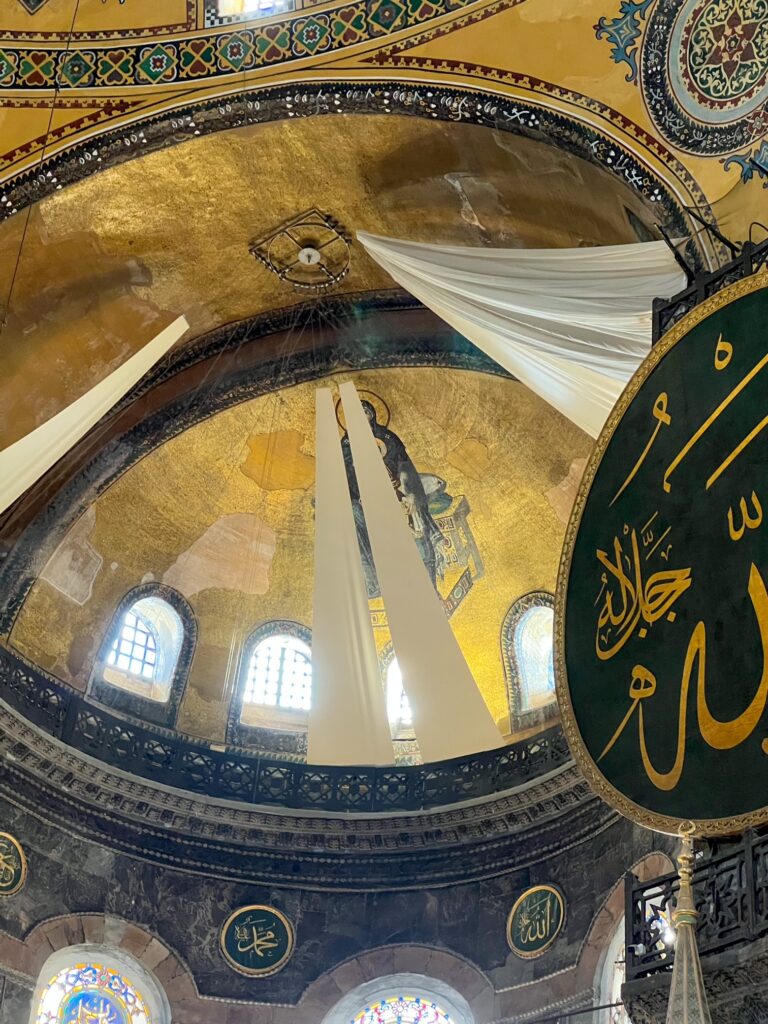
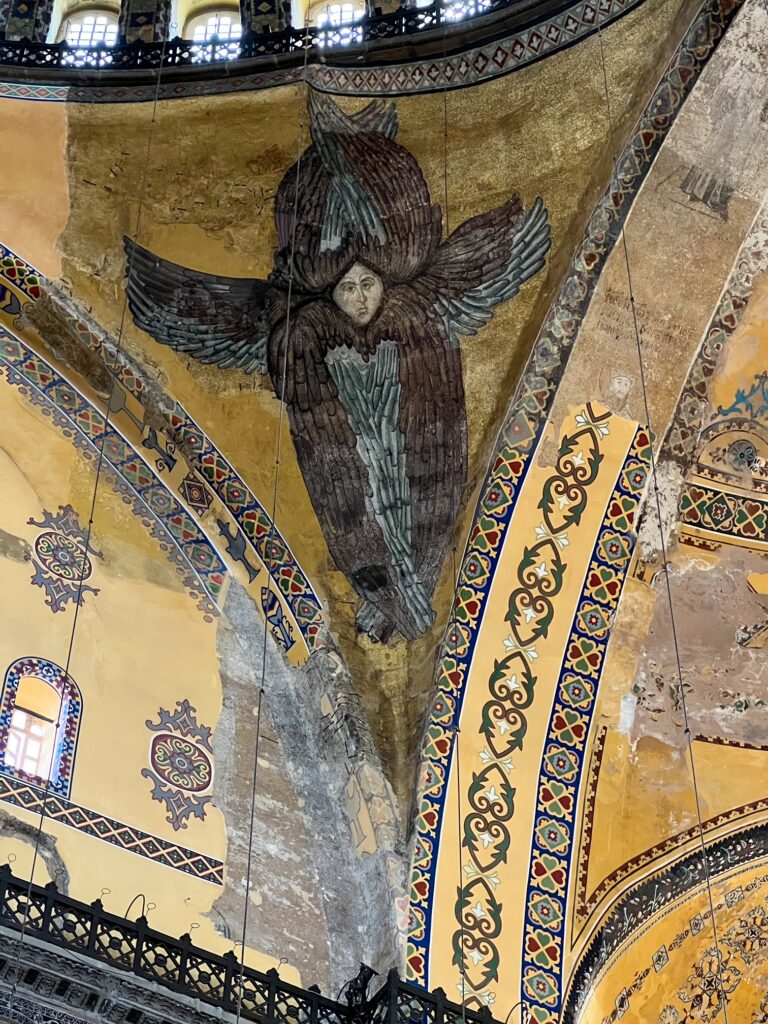
One of the places I really wanted to visit while In Istanbul was the Hagia Sophia and it didn’t dissapoint. Hagia Sophia was the tallest human made structure in the world for a thousand years and was completed in less than six years, which blows my mind when you consider how long some of the European cathedrals like Saint Peter’s took.
As I mentioned yesterday, Istanbul has often been a city of peace and tolerance through its promotion of diversity. The city blends together cultures and religions from around the world that live in harmony. A perfect symbol of this mixture is Hagia Sophia. Originally, it served as the largest cathedral in the world for nearly a thousand years. The current one (there were two previous Hagia Sophia’s in the same spot built of wood that didn’t survive) was built by the eastern Roman emperor Justinian I as the Christian cathedral of Constantinople for the state church of the Roman Empire between 532 and 537. Designed by the Greek geometers Isidore of Miletus and Anthemius of Tralles, it was formally called the Church of the Holy Wisdom and was then the world’s largest interior space and among the first to employ a fully pendentive dome. It is considered the epitome of Byzantine architecture and is said to have “changed the history of architecture.”
Hagia Sophia was embellished with mosaics of Christian symbols such as angels, the Virgin Mary, and Jesus. When the Ottoman Empire took over, it was converted into a mosque, adorned with minarets and Arabic writings in the 15th and 16th centuries, acting as a template for other Ottoman mosques. In 1934 it was turned into a museum, welcoming visitors from all around the world, representing the integration of Islam and Christianity in Istanbul. On July 10, 2020, the Council of State (Danıştay), the highest administrative court in Turkey, revoked the 1934 Cabinet decree that had turned Hagia Sophia into a museum. The Court’s decision was followed by a decree signed by Turkish President Recep Tayyip Erdoğan to reopen the monumental building as a mosque after a hiatus of 86 years. The Christian mosaics remain but those in the main area are covered with sheets because of Islam’s rules about images. You can just make out Mary on one of the upper walls behind a sheet.
What I find interesting is that for 1500 years different emperors and empires and crusaders and sultans and armies have preserved and protected this church-turned-mosque-turned-museum-turned-mosque. All these different leaders and religions and governments have been aware of its outstanding cultural, historical and spiritual value in all senses and have, for centuries, protected, renovated, and fortified this holy site accordingly.
Historical records show that when İstanbul was conquered by Ottoman Sultan Mehmet II, ‘the Conqueror’ (Fatih) in 1453, he headed directly to Hagia Sophia where the local residents had taken refuge, to let them know that their lives and properties would be safe and untouched. Unlike the 13th century when there was looting and pillaging — or the poor, dilapidated state of the building before the time of the Ottoman conquest — Ottoman Sultans did their utmost to repair and maintain the edifice where they performed their Friday prayers. The Turkish government continues to preserve and protect the UNESCO World Heritage site today.
Even though the building is now a functional mosque once again, it continues to welcome all visitors, regardless of religious background to visit and experience the site, and its rich history continues to be preserved.
One of the things I’ve learned is that religious practices in this city are far different from those in the United States; Muslims freely pray in churches and Christians freely pray in mosques. This is experienced when entering Hagia Sophia, where both Islamic and Christian symbols are observed and respected. It’s also interesting that there are many Greek and Roman mythological symbols too for Poseidon, Aphrodite, Zeus,etc. I felt the presence of God there and offered my own prayers in this sacred space that has had millions of prayers offered to God/Allah over the course of the centuries. It felt holy and right to pray in a place that is seen as valuable and sacred to so many who also disagree on so much. It felt like a place of peace and reconciliation for those reasons, so it was the perfect place to pray.
Sent from my iPhone
Question of the Week: 10/6/22
October 5, 2022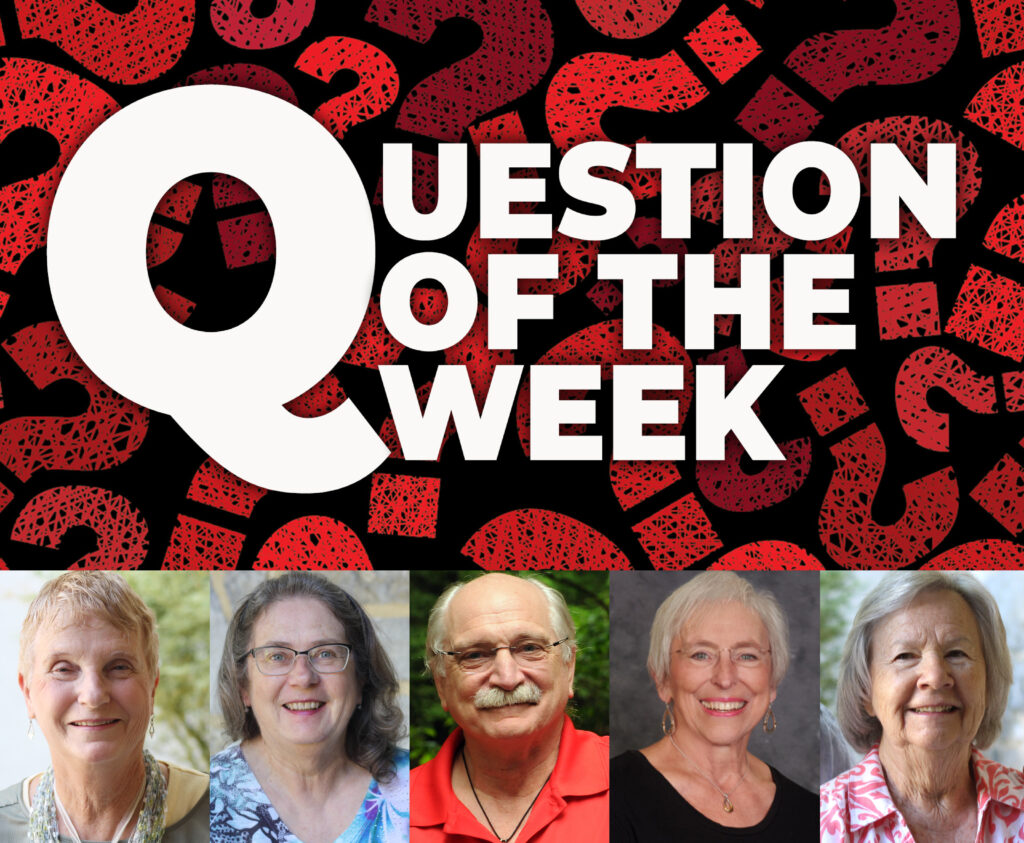
Who is someone unrelated to you that helped you become a better version of yourself?
Susan Kastelic: I am fortunate to have several people come to my mind, but the one to name would be Barbara Hardy who was the Volunteer Coordinator at Hospice of Central PA when I took the training course to become a volunteer 26 years ago. During the course of the training she pushed me out of my comfort zone to take on challenges I didn’t think I could accept. Her example and encouragement have remained with me in my hospice work and my life.
Debbie Hough: The person who influenced me so much is Dr. Lamar Williamson. Lamar taught all the Bible courses at the Presbyterian School of Christian Education and he taught us how to do exegesis – which allows the Bible to tell us what it says (instead of practicing isogesis, where we reverse things and we tell the Bible what it says). I learned that Lamar was a missionary in Zaire at one time and I remember seeing him terribly angry one day which was so unusual. He said that Stephen Biko was killed and introduced me to apartheid in South Africa. Lamar showed me the world in a faithful way.
Charlie Koch: There are a number of them over the years and more are being added. The ones that are known most to our congregation are Dale & Blondie Ferguson. There are teachers I would cite from high school and college. Some co-workers and friends. Many moved me at times when I needed course corrections and I am sure most of them have no idea. I think that most of them have no idea that I view them in this light. Our journey through time is a curious one.
Karen Carns: Mrs. Adams, a Sunday School teacher, who taught me to appreciate the beauty of the earth, speak kindly, and love always.
Suzie Gloeckler: Pastor Paul Laurel was my family minister. He confirmed me, married Dave and me and baptized my son. He challenged me all along my journey.
Download “The Meeting”
October 5, 2022We’ve had a number of requests for “The Meeting” insert — the dramatic reading presented on Sunday, Oct 9 featuring Justice, Mercy, Truth and Peace. If you’d like a copy, click here to download the PDF. To watch the presentation, click here.
“Basically Broadway” is Back!
October 5, 20224:00 – 5:30 PM SUNDAY, NOV 13 IN THE SANCTUARY
IN PERSON ONLY, NO LIVE STREAMING
Come back to church on the evening of stewardship Sunday, when we’ll share a report of gifts and enjoy a program featuring the many talents of this congregation. “Basically Broadway” features members and friends of Derry singing new and classic Broadway favorites. It will be a fun night of laughter, music, and fellowship as we celebrate our church’s talents and the pledged gifts that enable us to fulfill our God-given mission. Nursery care available: RSVP required: 717-533-9667.
NEW! Playground Meetups
October 5, 20229 AM – 12 PM SATURDAY, OCT 15 AT ELIZABETHTOWN PARK
Parents of young children are invited to spend time together and let their kids play at our new series of playground meetups. The first meetup will be hosted by Elizabeth Gawron. Derry friends will meet at the Fun Fort entrance.
If you are interested in hosting a meetup at your favorite playground, please contact Pastor Stephen.
Flood Relief for Pakistan Students
October 5, 2022Many Derry friends are providing scholarships for Presbyterian Education Board (PEB) students, and have expressed concern for their safety on learning about severe flooding in Pakistan. Friends of PEB is raising funds to be used for boarding scholarships and discretionary funds to remove other barriers to school attendance for impacted students of Pasrur and Sialkot schools. More than 30 million people have been directly affected or displaced from their homes, and PEB has two boarding houses and four schools in this affected area. Click here to donate
Sabbatical Notes from Pastor Stephen: ISTANBUL
October 4, 2022


Today I toured the oldest part of the city of Istanbul and learned a lot about its history. Istanbul is a city that has been at the literal crossroads of the world, and the rise and fall of many empires, which has caused it to undergo several name changes through the centuries.
Though Istanbul may have been inhabited as early as 3000 BCE, it was not a city until Greek colonists arrived in the area in the seventh century BCE. These colonists were led by King Byzas and settled there because of the strategic location along the Bosporus Strait. King Byzas named the city Byzantium after himself.
Byzantium became a part of the Roman Empire in the 300s. During this time, the Roman emperor, Constantine the Great, rebuilt the entire city. His goal was to make it stand out by building monuments similar to those found in Rome. In 330, Constantine declared the city as the capital of the entire Roman Empire and renamed it Constantinople. The city grew to be one of the largest and wealthiest in the world.
After the death of the emperor Theodosius I in 395, however, enormous upheaval took place in the empire as his sons permanently divided it. Following the division, Constantinople became the capital of the Byzantine Empire in the 400s.
As part of the Byzantine Empire, the city became distinctly Greek, as opposed to its former identity in the Roman Empire. Because Constantinople was at the center of two continents, it became a center of commerce, culture, and diplomacy and grew considerably. In 532, the anti-government Nika Revolt broke out and destroyed much of the city. It was after this destruction that many of the most famous monuments in the old quarter of the city (called Sultanahmet) were built, including the Hagia Sophia (Holy Wisdom). It became the center of the Greek Orthodox church in the same way Saint Peter’s Basilica in Rome was considered the center of the Roman Catholic church.
Although Constantinople significantly prospered during decades following its becoming a part of the Byzantine Empire, the factors leading to its success also made it a target for conquering. For hundreds of years, troops from all over the Middle East attacked the city. For a time it was even controlled by members of the Fourth Crusade after the city was desecrated in 1204. Subsequently, Constantinople became the center of the Catholic Latin Empire.
As competition persisted between the Catholic Latin Empire and the Greek Orthodox Byzantine Empire, Constantinople was caught in the middle and began to significantly decay. It went financially bankrupt, the population declined, and it became vulnerable to further attacks as defense posts around the city crumbled. In 1261, in the midst of this turmoil, the Empire of Nicaea recaptured Constantinople, and it was returned to the Byzantine Empire. Around the same time, the Ottoman Turks began conquering the cities surrounding Constantinople, effectively cutting it off from many of its neighboring cities.
After being considerably weakened, Constantinople was officially conquered by the Ottomans, led by Sultan Mehmed II on May 29, 1453, after a 53-day siege. During the siege, the last Byzantine emperor, Constantine XI, died while defending his city. Almost immediately, Constantinople was declared to be the capital of the Ottoman Empire and its name was changed to Istanbul.
Upon taking control of the city, Sultan Mehmed sought to rejuvenate Istanbul. He created the Grand Bazaar (one of the largest covered marketplaces in the world) and brought back fleeing Catholic and Greek Orthodox residents. In addition to these residents, he brought in Muslim, Christian, and Jewish families to establish a mixed populace. He reached out in peace and reconciliation to provide a place for multiple religions to co-exist and prosper. Sultan Mehmed also began the building of architectural monuments, schools, hospitals, public baths, and grand imperial mosques.
From 1520 to 1566, Suleiman the Magnificent controlled the Ottoman Empire, and there were many artistic and architectural achievements that made the city a major cultural, political, and commercial center. By the mid-1500s, its population had grown to almost 1 million inhabitants. The Ottoman Empire ruled Istanbul until it was defeated and occupied by the Allies in World War I.
Following World War I, the Turkish War of Independence took place, and Istanbul became a part of the Republic of Turkey in 1923. Istanbul was not the capital city of the new republic, and during the early years of its formation, Istanbul was overlooked; investment went into the new, centrally located capital, Ankara. In the 1940s and 1950s, though, Istanbul reemerged. New public squares, boulevards, and avenues were constructed—and many of the city’s historic buildings were demolished.
In the 1970s, Istanbul’s population rapidly increased, causing the city to expand into the nearby villages and forests, eventually creating a major world metropolis as it had been for centuries prior.
It was amazing to walk the streets of Sultanahmet Square and take in historic sites built by both emperors and sultans, as well as Catholic, Orthodox, and Muslim leaders. All these sites have seen so much change and transformation, but they remain and are still used and valued by diverse cultures today. I think there’s a lesson to be learned, which I’ll explore in tomorrow’s notes : tomorrow is a travel day to Cape Town.
